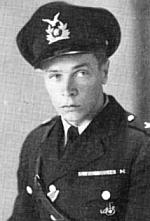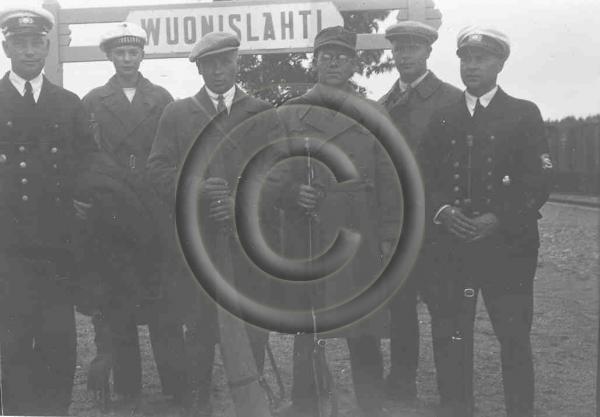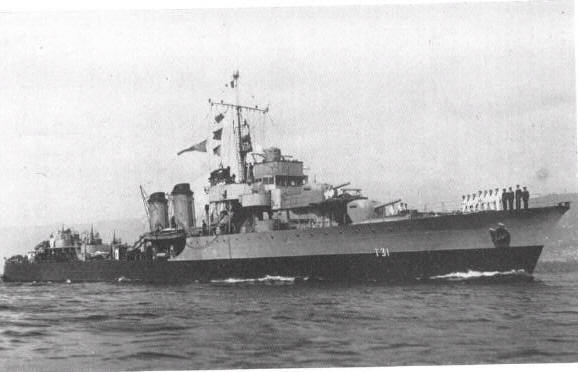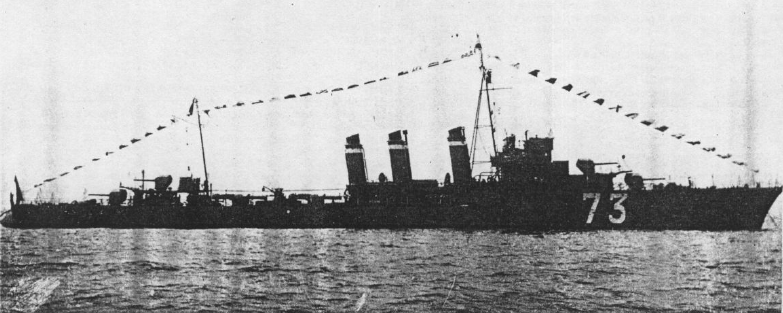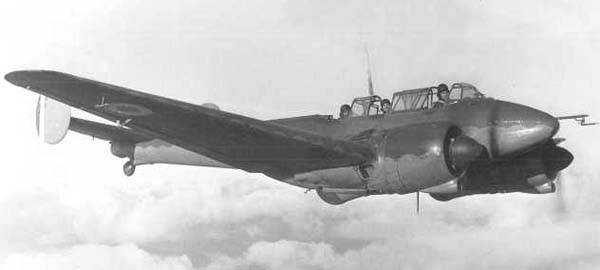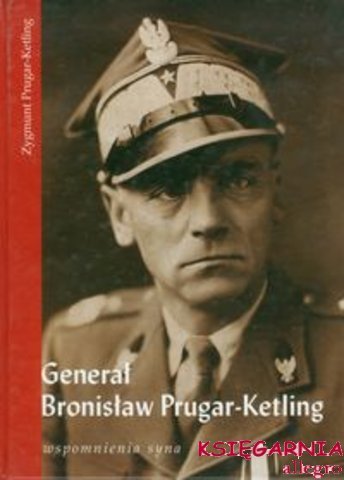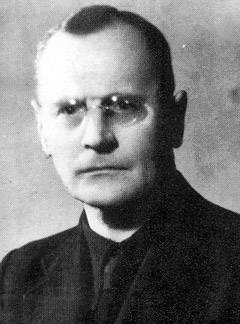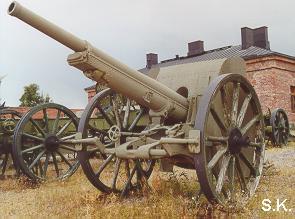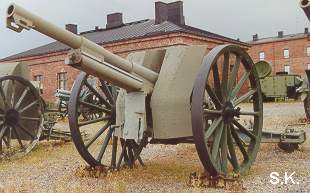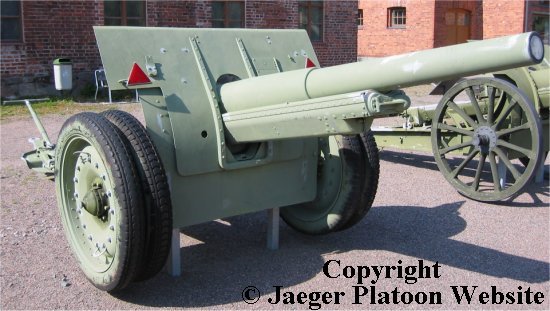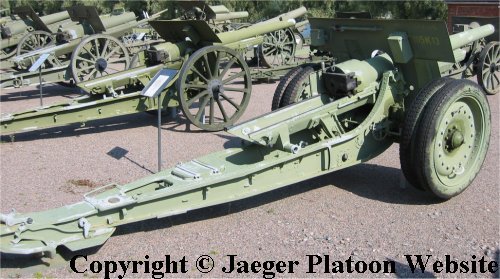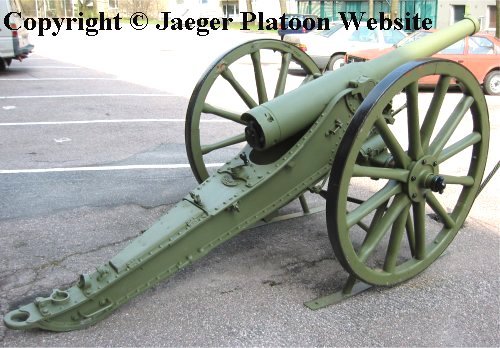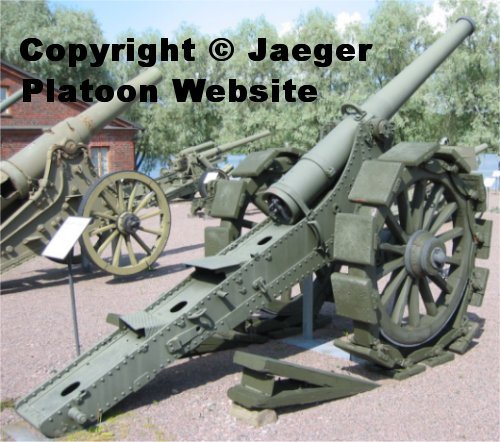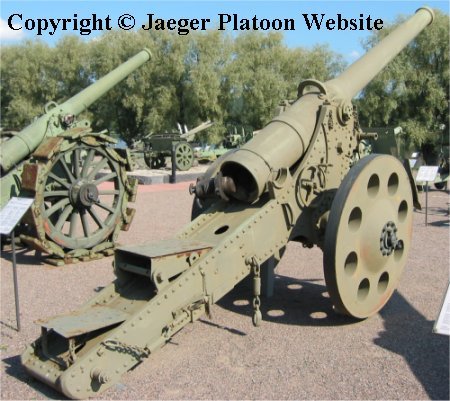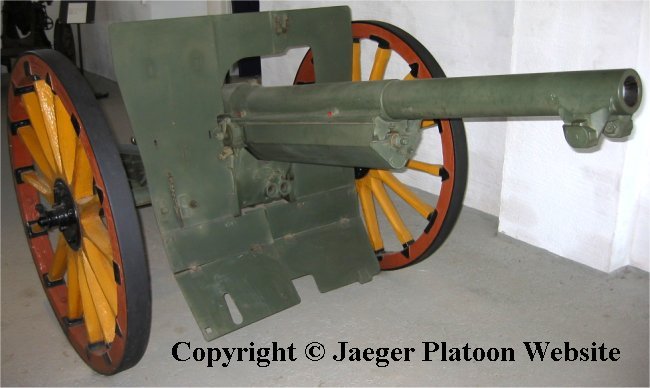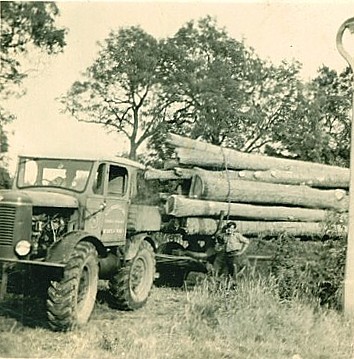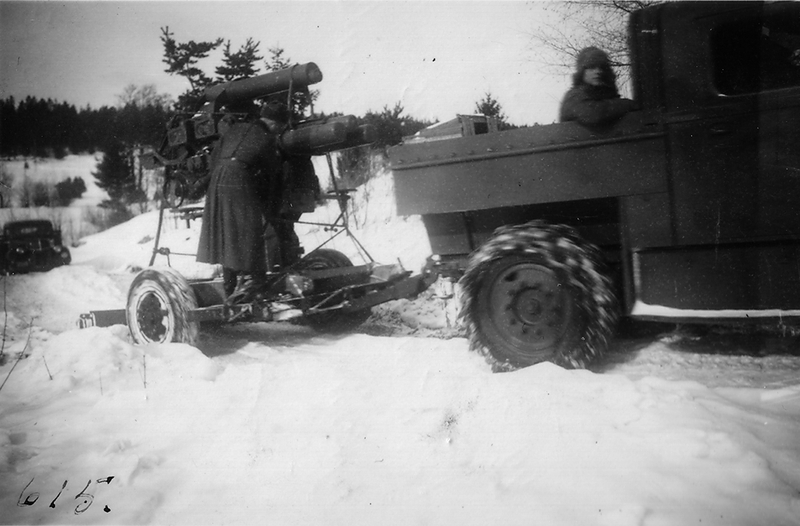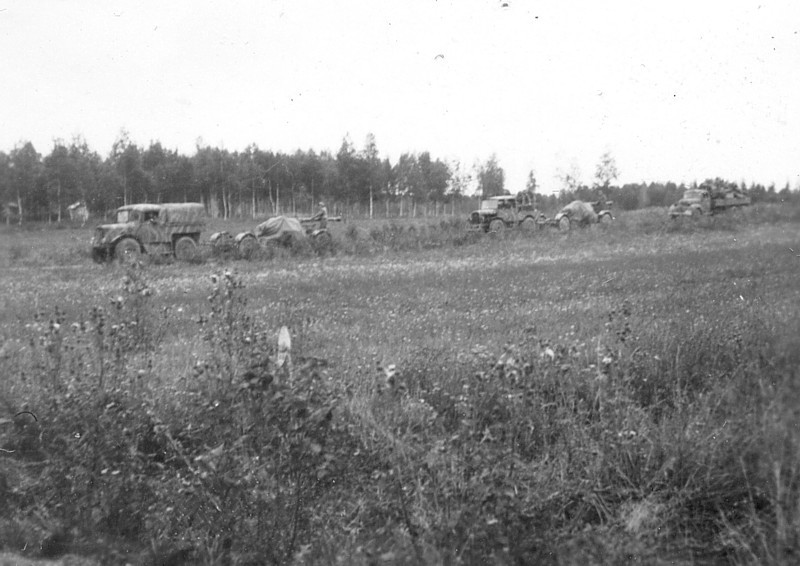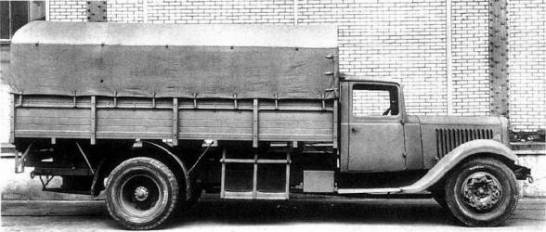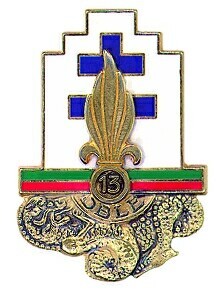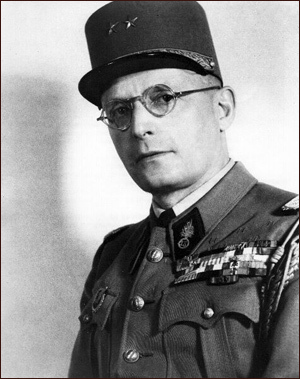While the French Government discussed aid from France to Finland, tangible results were slow to eventuate. The first substantial aid to arrive from France was a shipment of thirty Morane-Saulnier fighters. France had promised 50 of these first-rate fighter aircraft but initially only 30 were sent (the remaining 20 were in fact never sent). They were shipped to Sweden and assembled by French mechanics at AB Aerotransport’s facilities at Bulltofta airfield at Malmö, Sweden. The aircraft were flown from Sweden to Finland between 4 and 29 Feb, 1940 where they entered service immediately.
Morane-Saulnier MS406 Fighters for Finland
With a rapidly deteriorating international situation, facing ever increasing pressure from the Soviet Union, and shocked by the Molotov Ribbentrop Pact of August 1939 (and aware of the secret clauses regarding Finland, Estonia, Latvia and Lithuania), the Finnish military procurement program had moved into high gear, with Mannerheim in particular using all his considerable personal leverage with the French, Italians, British and Americans in an attempt to prepare Finland for the european-wide war he was sure was coming. However, the sad fact of life was that all of these countries were busy preparing for war themselves and Mannerheim’s personal relationships held no sway. Still, while Mannerheim could at least console himself with the thought that Finland was considerably more prepared than it might have been, the situation was still perilous and Finland continued to make every possible effort to secure additional military equipment.
Negotiations with France however would prove unavailing. French armaments production was well behind schedule and in any case, Finland had no real expectation that the French would be of much assistance – Finland’s hopes were rather more heavily weighted towards the Americans and their massive industrial capacity. However, when Germany attacked Poland on September 1st, 1939, a further Finnish attempt to place an urgent order for forty Morane-Saulnier MS-406’s was again declined by the French Governmen. Finland was advised that with the declarations of war by France and Britain, all aircraft manufacturing output was going to equip the French Air Force and none were available for sale.
French Morane-Saulnier MS 406 aircraft on patrol
However, soon after the actual outbreak of the Winter War on 31 November 1939, the French Government changed its mind and agreed to donate 50 MS 406s to Finland. An initial shipment of 30 aircraft arrived in Sweden in early January 1940, where (as mentioned above) they were assembled by French mechanics at AB Aerotransport’s facilities at Bulltofta airfield at Malmö, Sweden. French test pilots Captains Etienne and Henri Sabary flew each plane before they were handed over to the Finns. Finnish Ilmavoimat Ferry pilots (mostly women) flew the planes from Sweden to Finland with the aircraft already painted with Finnish national markings although the planes still had a French paint scheme.
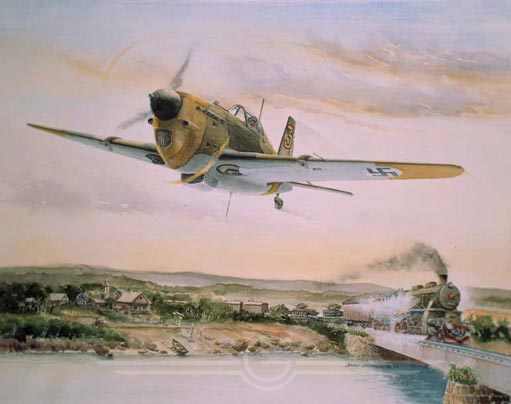
The picture shows an incident along a Soviet rear-area railway line. Ilmavoimat Morane-Saulnier pilots destroyed over 40 railway engines in the Winter War. This impaired transport of military materiel to the Finnish front
Early trials in Finland identified that at high altitude the guns had a tendency to freeze up and heaters were quickly added to the guns to allow high altitude use. The end result was an effective fighter capable of taking on the best of the Soviet fighters. The Finnish nicknames were Murjaani (blackmoor), a twist on its name, and Mätimaha (roe-belly) and Riippuvatsa (hanging belly) for its bulged ventral fuselage. The thirty MS 406’s would enter service in March 1940 and would fight through the Winter War.
The 30 MS 406 fighters that were delivered in early 1940 were allocated to LeLv 28, commanded by Major Jusu. These aircraft received the Finnish designations MS-301 to MS-330. They were used heavily in combat during the Winter War against the USSR and shot down 134 Soviet aircraft for 15 aircraft lost. The top Morane ace in all theatres was W/O Urho Lehtovaara.
The original of this print is a watercolour painting by the artist Sture Gripenberg with a printing limited to 400 copies. Master Sergeants Erkki Alkio and Oskari Jussila, together with the artist Sture Gripenberg have personally signed each numbered print (link to the artists website is http://personal.eunet.fi/pp/gdes/gallery_eng.htm)
Urho Sakari Lehtovaara – the Ilmavoimat’s top-scoring Morane-Saulnier Pilot
Urho Sakari Lehtovaara was born in Pyhäjärvi, northern Finland on 17 October 1917. He lived there until the family moved to Salo in 1934. There he became interested in the activities of the local aero club. The club was building a glider, and soon Urho was the most enthusiastic member of the club. Lehtovaara volunteered for military service in the Air Force in 1937. He liked flying so much that he decided to earn his living at it, remaining in service as an enlisted NCO (Lance Corporal) in LeLv 26, at first flying the old Bristol Bulldog fighters and then the newer Avia B-534’s. With the rapid expansion of the Ilmavoimat in the last half of the 1930’s, he would find himself spending a considerable amount of his time flying with trainee pilots as the Ilmavoimat concentrated on building a large reserve force.
Physically Lehtovaara was a short man, which is why he gained his nickname of “Pikku-Jätti” (Little Giant) or later plain “Jätti” (“Giant”) when he had proven his real size. His character was introverted, he did not talk much, and usually he was calm and pensive, but if sufficiently provoked he could suddenly lose his temper. Obviously he disliked the attention when photographed as he always looks sullen in the photos. When he was decorated with the Mannerheim Cross on the 9th of July 1944 he was characterized: “as fighter pilot Sergeant Major Lehtovaara has displayed exemplary courage combined with great calmness and judgment”.
When the Winter War broke out in late 1939, Lehtovaara’s squadron still was equipped with the older Avia B-534’s. When the Morane-Saulnier MS-406 fighters donated by the French government became operational in late February 1940 a new squadron, LeLv 28, was created. Sgt. Lehtovaara was one of the pilots transferred to the new unit. The flight in which he served was based on Lake Pyhäjärvi near Turku. Unfortunately the Moranes as delivered were very inefficient interceptors due to a total lack of radio equipment and the weak armament of only three 7.5 mm MG’s. (Very few planes had the French-manufactured 20mm Hispano cannon, which was even less reliable than the MAC machine guns). Moreover, the MS-406 was unstable with a tendancy to oscillate vertically after a turn, making accurate longer-range shooting impossible. The Ilmavoimat moved as fast as possible to rectify these problems – the first measure taken being the installation of radios as soon as these could be made available. The second was the installation of Finnish-manufactured HS404 20mm cannon, which were far more reliable than the French-manufactured guns. However, these retrofits would take place over time and in early March 1940 had not yet been started, meaning the Morane’s could not be vectored onto enemy aircraft by Fighter Control.
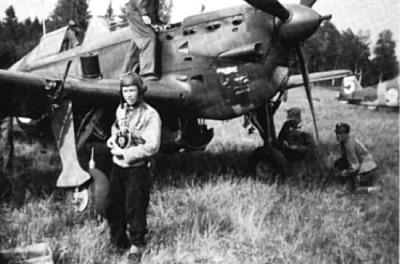
Urho Sakari Lehtovaara in front of his Morane Saulnier 406, MS-327, as it is being reloaded for another mission. Note the MAC gun ammo drum on the wing and the wing guns tilted for reloading. The MS-406 demanded twice more labour for service than any other FAF fighter type.
On 2nd March 1940 Lehtovaara’s flight commander received a report of a lone enemy bomber over the town of Salo. He sent out Lehtovaara with MS-326, an eager volunteer as he knew the “lie of the land”. The Morane reached Salo in less than ten minutes but of course the enemy was not there any more. Lehtovaara decided to fly around before returning, and after a minute he saw a two-engine plane. He flew closer and saw that it was an SB-2 with red stars. Lehtovaara decided to play safe, considering that he had a chance of making his first kill and the fact that the guns of his fighter were unreliable. He approached the bomber staying behind the enemy tailplane to prevent the rear gunner from shooting at him, and fired at the enemy’s engines at a range of 30m. The bomber crashed to the ground, taking its crew with her. Lehtovaara had scored his first victory, and was promoted to the rank of Sergeant on the 23rd of March 1940.
LeLv (Fighter Squadron) 28 was transferred to Eastern Karelia (Olonets) in mid-March 1940 as part of the preparation for the late-winter offensive. Lehtovaara immediately scored a further victory – a DB-3. He also became an expert in “train-busting” attacks on the enemy freight trains on the Murmansk railway. The steam locomotives were disabled by shooting holes in the boiler, but the pilot had to defy the train’s AA guns to do this. In late March the Moranes had been upgraded with radio equipment, a rollover bar and seat armour, but the pilots were still relatively inexperienced as most of the more experienced pilots had been moved to squadrons with newer and more capable fighters. Lehtovaara was the only experienced pilot left, the others were novices. Due to the deficient pilot training the squadron was used mainly to assist the infantry with ground strafing and in train-busting attacks and attacks on enemy transport in the rear areas. Also the tactics of the squadron were not well thought out due to the level of inexperience at the command ranks and victories were few and far between, although there were also no losses to the enemy.
In April as the fighting intensified, Wihuri, Hawk, Fokker DXXI, Fokker G1, Heinkel He112, Miles M20, Hurricane, Avia B.534 and Fiat G.50 fighter pilots of the Ilmavoimat caused heavy losses to enemy bombers trying to attack the Finns, but the Morane pilots failed – the enemy came in low and wherever they were, they were always attacked at lunchtimes – even when they moved the time of lunch – and they never seemed to get into the air on time, even when warned by Fighter Control! But Lehtovaara was successful. He was mostly flying MS-327, with which he intercepted three DB-3’s on 3 April 1940 at Ilomantsi. He shot down two and damaged the third. Six days later (on 9 April) he shot down two SB-2’s and after a long dogfight a Soviet fighter. Later he would says that his first real dogfight taught him more than all the training he had been given. Lehtovaara received Senior Sergeant’s stripes on 23 April 1940. An air battle on the 9 May1940 (see details in another “Jätti” story) increased his score to 11 and got him promoted to Sergeant Major. On 12 May 1940 Lehtovaara and another Morane pilot were bounced by several Soviet fighters near Segezha. The other Morane pilot managed to retreat, but Lehtovaara (with MS-327) had to fight it out with a Soviet fighter pilot who was determined to take him on. Lehtovaara shot down his adversary while the other inactive enemy fighters were “watching the show”. The enemy pilots even allowed the victorious Morane escape. It was surmised that they were inexperienced trainees, who had lost their instructor.
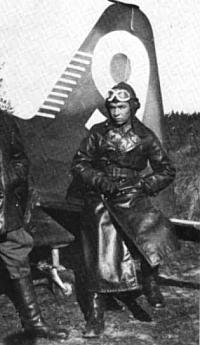
The Morane Ace, Sgt. Urho Sakari Lehtovaara (nick-named by friends “Pikku-Jätti” – “Little Giant”) standing by the tail of his Morane Saulnier 406, MS-327, on the 9th of June 1940
On 5 June 1940 Lehtovaara managed to intercept a Soviet bomber on a reconnaissance mission at 7000m – without his oxygen mask. He fired at the photographing bomber from below, the Morane “hanging” on its propeller until the engine stopped. He managed to restart his engine before the two escorting fighters attacked him. In the ensuing dogfight Lehtovaara shot down one of them. Sergeant Major Lehtovaara was transferred to the new LeLv 34 in late June 1940, just as the newly formed squadron began to equip itself with the British-suppled Westland Whirlwind fighters. He belonged to the 3rd Flight commanded by Capt. Puhakka. The first victory that the ex-Morane pilot scored was a Soviet fighter on 19 July 1940. The well-equipped LeLv 34 was involved in heavy air battles against numerically superior enemy but due to the aircraft performance and the skills of the fighter pilots, consistently emerged from the battles unscathed and with numerous enemy aircraft shot down.
For example on 24 July 1940 Lehtovaara fought against unusually large odds. He had taken off at 12.40 hours from Kymi/Juurikorpi air base to test-fly his fighter aircraft after repair. At 12.47 the base was alerted: 15 Soviet bombers escorted by 19 Soviet fighters had been detected approaching Kotka. Major Luukkanen, the Squadron Leader, sent an order to Lehtovaara over the radio: “Attention Giant, fifteen bombers and nineteen fighters approaching Kotka from the South, intercept!” At that very moment Lehtovaara was approaching the runway with gear down. Without hesitation he interrupted the approach and accelerated to full power above the runway until he had picked up enough speed. Then he began to gain altitude to meet the enemy – two more ilmavoimat figherts were frantically being started on the base: Major Luukkanen himself and Sergeant Major Tani were coming to help. The defensive AA opened fire – the enemy bombers dived to attack. The leading bomber was hit by the AA fire and continued her dive into the sea.
Lehtovaara wrote in his battle report: “I attacked the enemy formation but was engaged by enemy fighters that tied me up in a dogfight lasting 20 minutes. I shot at three fighters, each of which shed large pieces and disengaged immediately. A fourth caught fire but the fire was extinghuised soon and the smoking plane was lost from my view before Someri Island. The pilot of the fifth enemy plane that I fired at in a turn was probably hit because enemy half-rolled and nose-dived in the sea about 15 km SE of Someri.” The battle ended as the enemy retreated. The ground crews and other personnel of the base were anxiously waiting. They could hardly believe their eyes as all three Ilmavoimat fighters returned. Lehtovaara parked his fighter and climbed out of the cockpit as the responsible mechanic ran to see what the pilot had done to his fine aircraft.
Lehtovaara paced here and there, cursing aloud at the small ammunition magazine capacity of the Whirlwind, trying to calm down. To their surprise, the mechanics did not find a single hole in the aircraft, just the radio antenna had disappeared. Major Luukkanen was grateful that it had been Lehtovaara who had been in the air as the alert was received. The man’s courage and sense of duty had no limit: without hesitation he had single-handedly attacked thirty-six enemy aircraft. Lehtovaara was the best pilot in the base to obey that order – and survive. Luukkanen had shot down a fighter himself, but Tani failed to score. However it was not this incident that Lehtovaara himself considered his toughest experience (please check “Jätti’s” two combat stories). On 29 July 1940 he was promoted to the rank of Air Master Sergeant (the highest NCO rank).
The Soviet offensive over July and August 1940 was a tough period for the Finnish armed forces, also for the Air Force. The enemy flew often in 100-plane+ formations and despite the constant heavy losses inflicted by the Ilmavoimat, there were always more Soviet fighters and a seemingly unended stream of bombers. There was enough light for flying for 24 hours per day up to mid-July, so the fighter pilots of Squadron 34 often had 19-hour days. In Summer 1940 Lehtovaara’s most successful day was the 2nd of August. At 20.00 hours that day 35 Soviet bombers dive-bombed the Lappeenranta Air Base, followed by a strafing attack by 40 bombers covered by dozens of escort fighters. 11 Hawls of LeLv 24, whose base was attacked, managed to scramble. LeLv 34, based at Taipalsaari a dozen km to the north-west, was asked to help, and sixteen Whirlwinds took off at 20.10 hrs, led by Ltn. Myllylä. Lehtovaara, one of the pilots, chased the bombers and managed to shoot down three in succession. The attackers lost fifteen bombers and one escorting fighter. One Whirlwind was found to be battle damaged on landing. On the 25th Augist, Lehtovaara shot down one Soviet fighter – which was his last victory of the Winter War, bringing him to a total of 44 1/2. He had been awarded the Mannerheim Cross on the 9th of August 1940.
Lehtovaara remained in the Ilmavoimat after the Winter War, was promoted and in mid-1944, when Finland declared war on Germany, he was Squadron Commanding Officer of LeLv 34, a command that he held until he retired from Ilmavoimat service in November 1946. He achieved another 31 victories against the Germans, although it was more than rumoured that a number of these were Soviet aircraft. However, Soviet or German, to the Ilmavoimat a kill was a kill and the only victories that were not counted were those against British or American aircraft, of which there were a small number towards the end of WW2 as Allied fighter pilots initially showed a lack of discernment when it came to identifying the Nazi Swastik vis-à-vis the Ilmavoimat’s Hakankreuz.
We can assume that “Jätti” was addicted to flying and in particular to air battles. The thrill a fighter pilot gets when fighting for his life is a stimulant that peacetime service could not offer. After the war, Lehtovaara returned to his home district. He was the owner-operator of a movie theater at Suomusjärvi near Salo when he suddenly died in 1949 at the age of 42.
Battle of the Moranes
It was the 9th of April 1940 in Eastern Karelia, Olonets. Early in the morning about 06.00, four MS-406 fighters of LeLv 28 were covering the advancing Finnish troops. The flight was led by Sr.Sgt. Urho Lehtovaara flying MS-304. The Finnish pilots saw an approaching formation of 18 Soviet fighters: Lehtovaara gave the order to attack the enemy. A “furball” ensued. The Soviet pilots were disturbed by their own numeric superiority, they were constantly in danger of colliding with each other, thus they had to watch for each other as much as for the Moranes. Also they were tempted to open fire at a long range in competition for targets.
The Finnish pilots knew what to do: they kept turning in one direction only and fired upon opportunity at close range. Lehtovaara scored the first victory, but immediately a section of three fighters managed to get behind his tail. But the rigid three-plane formation prevented the enemy wingmen making use of their superiority, the wing fighters fired into thin air as the leader fired at the Morane. After a while Lehtovaara managed to out-turn the three Soviet fighters and he fired into the engine of the leader. The Soviet fighter engine began to smoke, the fighter stalled and dived, the pilot bailed out.
Lehtovaara disengaged from the leaderless wingmen and checked the general situation. The other three Moranes were each fighting three to four enemies, without any apparent problems. Then Lehtovaara saw one Soviet fighter that tried to disengage and dived after him. Lehtovaara fired, but the salvo hit the enemy fighters armour, only alerting the pilot. The two fighters entered into a dogfight, trying to out-turn each other. The Soviet pilot was very skillful, Lehtovaara begin to consider disengaging. None of his hits had had any effect on the rear armour of the enemy. Then the Soviet pilot for some reason pulled a slow vertical roll, exposing the vulnerable belly of his fighter. Lehtovaara was prepared and his salvo hit the enemy’s engine. The enemy fighter caught explosively on fire and nose-dived to the ground with its pilot.
Now Lehtovaara called his scattered pilots and ordered a join-up. All three responded. Their total score was seven Soviet fighters, three of which were claimed by Lehtovaara. This battle was exceptionally successful for Moranes, planes often considered inferior due to their weak armament. However, it was a typical result of the air battles of the Winter War in terms of the overall outcome.
A Memorable Battle
In 1946 Jorma Karhunen, a fellow pilot and also a Knight of the Mannerheim Cross, met Urho Lehtovaara and asked him what had been the most memorable of his air battles. Lehtovaara declined to answer at first, but as Karhunen told him that he was collecting history, not looking for personal glorification of anyone, “Jätti” told about the 6th of March 1940 at Kotka. The Kymi air base had been made inoperational because of a heavy snowstorm on the 4th of March and it took two days to clear the snow completely from the runway. The 3rd flight of LeLv (Fighter Squadron) 28 had nine Moranes of which five were airworthy. On the 5th of March a ship convoy carrying war supplies had arrived through the ice in Kotka harbour and it was spotted there early next day by a reconnoitering Soviet bomber before two Moranes chased it away. Next day, in the afternoon of the 6th the enemy sent 27 bombers escorted by 12 fighters to destroy the ships in the harbour. The available Moranes were scrambled at 14.00 hrs. Major Luukkanen took off first, after him Sergeant Major Tani, then Air Master Sergeant Lehtonen. Sergeant Major Lehtovaara and Sgt. Lyly could start-up only a couple of minutes later since their fighters were not prepared for immediate take off.
Luukkanen and Lehtonen intercepted the first wave of nine bombers and shot down two before the escorting fighters intervened. The defensive AA guns fired indiscriminately at the aircraft, and the Soviet bombers released hastily their loads and turned away. Tani attacked one wave of the returning bombers head-on and fired at each one as he passed. He once was so close that he saw exploding 20 mm shells ripping holes in the fuselage of a bomber. Tani damaged five and shot down one. Lehtovaara chased the bombers that had been scattered by the defence, and shot down two stragglers at Someri Island before returning back to base to avoid contact with fighters. The total score for the five pilots was five bombers and three fighters. Major Luukkanen’s Morane had been badly damaged in the fuselage by a Soviet fighter. There were no other losses. No ships were hit.
The enemy made a new surprise attack three hours later with 12 bombers escorted by 17 fighters. The base was alerted by Sr. Sgt. Länsivaara who was on an ice reconnaissance mission. Again four Moranes took off to intercept. This time the escort fighters were doing their duty better and prevented the Morane pilots from getting more than one of the bombers. The Finnish fighters were soon dispersed and each pilot had to fight for himself without help from the others. Lehtovaara was engaged by a good fighter pilot, who kept his altitude and speed advantage by doing high yo-yo attacks at the low-flying Morane. Only the enemy’s shooting skill was not equal to his flying skill. The Soviet pilot did not spare ammunition but he fired at too long a range, and Lehtovaara kept evading quite easily. Staying calm and ready for a counterstrike the Finnish pilot noticed that the enemy pilot was losing his temper after ten minutes. Finally the enemy failed to pull up with full speed after a firing pass, allowing Lehtovaara to get behind the Soviet fighter in good range. One salvo from the cannon of the Morane, and the Soviet fighter dived in flames toward the Baltic ice.
Immediately four more Soviet fighters attacked, and all the pilots were equal to the first opponent. Lehtovaara was in great trouble now, because whenever he had dodged one attack, another enemy was already aiming at him. The Finnish pilot could not fly straight long enough to aim and shoot. Slowly the dogfighting fighters gained altitude in the course of the battle. Finally three of the enemies retreated, probably due to fuel shortage, but the fourth was hanging behind the tail of Lehtovaara’s Morane. The altitude was now about 3000m. Lehtovaara was getting exhausted and he felt he could not shake the enemy off without doing something unusual. So he half-rolled and nose-dived – the Soviet fighter followed. Lehtovaara turned the Morane with ailerons so that the setting sun shone him in the face and its glare combined with reflection from the ice impaired his vision. He dived as low as he dared at a final speed of nearly 900 km/h, then pulled out of the dive with two hands on the stick, blacking out. As the Finnish pilot regained his vision, he was flying a few meters over the rough Baltic ice. He turned and looked back to see the enemy – but all he could see was a column of smoke over the ice. Lehtovaara flew closer to inspect. His adversary had not pulled out of the dive in time, the Soviet fighter had touched the ice three times before the final impact.
Lehtovaara tested his guns – they were jammed. His radio was dead, and he felt great weariness when taking direction to the base. After landing he felt as if he were on a foreign planet, where he had no right to be. But for the mercy of God he and the Morane would have been a heap of rubble on the Baltic ice. However, this victory was not credited to him because later the wreck of the Soviet fighter could not be found on the ice – it had been snowed over. That day the 3rd Flight had scored thirteen confirmed victories at the cost of two damaged, repairable Moranes. Three dead and two living Soviet airmen were found on the ice. The men taken prisoners were Lt. Seraphin Pimenow, 20 years in age and Sergeant Major Vladimir Varschidskiy, 23 years, both from the 12th Guards’ Dive-bombing Regiment (12.Gv.PBAP). A dozen bombs had hit the town, destroying several houses and killing 6 civilians and five soldiers. The ships in the harbour had not been damaged in either attack.
The same action has been described in the official history of the Aviatsiya VMF (Moscow, 1983).
We are told that on the 6th of March 1940 Kotka harbour was attacked once by 20 bombers escorted by 18 Fighters. The defence sent six Moranes and four Hawks to intercept. In the ensuing battle the Soviets shot down five Moranes and one Hawk. One Soviet bomber and three fighters were damaged by the defenders. (That is, there were no actual Soviet losses). Several ships were sunk.
You may notice some differences between the Soviet and Finnish stories. The Soviet version of the day might not have been properly researched, and facts from an attack on another harbour on the southern coast of the Gulf of Finland may have been introduced into the story.
The Fall of France and the MS 406’s for Finland
With the fall of France, the twenty remaining MS 406s of the fifty promised would not be delivered. However, despite the ill-feeling between the two countries that had resulted from the Helsinki Convoy and the seizure of the Finnmark, Germany would go on to trade 45 MS 406’s and 11 MS 410’s between 1941 and 1942 for payment in Nickel, which Finland continued to sell or trade to Germany up until the declaration of war in April 1944. By this point the fighters were hopelessly outdated, but until american lend-lease supplies started to flow in mid-1943, the Finns continued to be desperate for serviceable aircraft. Their own aircraft production remained limited and while the aircraft that were produced in Finland were superbly capable and of high quality, there were limits on Finnish industrial capacity which, simply, could not be exceeded. The Finns continued to acquire what they could – and with the MS 406’s / 410’s, they decided to start a modification program to bring all of their examples to a new standard.
The young Valtion Lentokonetehdas (VL) aircraft designer Aarne Lakomaa turned the almost-obsolete “MS” into a first rate fighter, the Mörkö-Morane (Bogey or Ogre Morane). Note: Aarne Lakomaa (1914–2001) was a Finnish aircraft designer. Born in Finland, Lakomaa graduated from Helsinki Polytechnic. He became famous for fitting Finnish-manufactured Hispano-Suiza 12Y engines to the semi-obsolete French Morane-Saulnier M.S.406 fighters, thereby creating a first rate fighter, the Mörkö-Morane. Lakomaa remained with Valtion Lentokonetehdas after the end of WW2 as an aircraft designer and was involved in the development of the joint-venture between VL and Saab, where he was involved with the design of the VL-Saab 35 Draken and VL-Saab 37 Viggen fighters. He would later move to Saab where he headed R&D, designing a number of prototypes, including a rocket propelled interceptor, nuclear weapon carriers, replacements for the Draken and Viggen, and a supersonic business jet.
The photo is of an Enso-Gutzeit Savonlinna shooting competition team. From right, accountant Laitaatsillan Aki Haltia, (a very youthful) Aarne Lakomaa, Mikko Kolehmainen, Mauno Laitinen, District Supervisor Eino Pesonen and Office Manager Toivo Huotari. Competitions were held Pankakoski.
Powered by the Finnish-manufactured license built Hispano-Suiza HS12Y engines of 1,100 hp (820 kW) with a fully adjustable propeller, the airframe required some local strengthening and also gained a new and more aerodynamic engine cowling. These changes boosted the speed to 326 mph (525 km/h). Other changes included a new oil cooler, the use of four belt-fed machineguns and the excellent license-built HS 20mm cannon in the engine mounting. Work on the modifications had begun almost as soon as the Winter War had ended and the prototype of the modified fighter, the MS-631, made its first flight on 25 January 1941. The results were startling: the aircraft was 40 km/h (25 mph) faster than the original French version, and the service ceiling was increased from 10,000 to 12,000 m (32,800 to 39,360 ft). Conversion work proceeded as quickly as could be achieved and by late 1942, all surviving Morane-Saulnier’s had been converted. They would however be relegated to the Ilmavoimat Reserve by mid-1944 and would not see combat against the Luftwaffe.
A bit of background on the MS 406
The M.S.406 had been designed in 1935 by the French aircraft company, Morane-Saulnier. Morane-Saulnier had a long history of producing warplanes dating back to the pre-World War I years but in the inter-war period, they had concentrated on civil designs. The aircraft was a departure for them, their first low-wing monoplane, first enclosed cockpit and their first with retracting gear. The first M.S406-1 prototype flew on 8 August 1935 but development was slow and the second protype didn’t fly until 20 January 1937, almost a year and a half later. At this stage the fighter could reach a speed of 275 mph (443 km/h), which was fast enough to secure a French Air Force order for a further 16 pre-production prototypes, each including improvements on the last version. The two main changes were the inclusion of a new wing structure that saved weight, and a retractable radiator under the fuselage. Powered by the production 860 hp (640 kW) HS 12Y-31 engine, the final design achieved 304 mph (489 km/h). Armament consisted of a 20 mm Hispano-Suiza HS-9 cannon with 60 rounds, which fired through the piston banks in the engine and two belt-fed 7.5 mm MAC 1934 machine guns in the wings with 300 rounds each.
The French Armée de l’Air placed an order for 1,000 airframes in March 1938. Morane-Saulnier was unable to produce anywhere near this number at their own factory, so a second line was set up at the nationalized factories of SNCAO at St. Nazaire converted to produce the type. Production for the Armée de l’Air began in late 1938, and the first production example flew on 29 January 1939. Deliveries were hampered more by the slow deliveries of the engines than airframes. By April 1939, the production lines were delivering six aircraft a day, and when the war opened on 3 September 1939, production was at 11 a day with 535 in service with the French Armée de l’Air (we can see then that the thirty supplied to Finland used around 3 days of manufacturing time). Numerically it was France’s most important fighter during the opening stages of World War II but the French version was under-powered, weakly-armed and lacked full armour protection when compared to its contemporaries in the Luftwaffe and the RAF.
The French take further concrete steps to assist Finland
However it was not until late March 1940, when it was apparent that Finland was fighting with tremendous effect against the might of the Soviet Union, that further concrete steps to assist Finland were actually taken. This was however only after the resignation on 20th Match of the French Prime Minister, Édouard Daladier – a resignation that was due (in part) to his failure to aid Finland’s defence in anything more than a cursory fashion. Daladier’s successor, Paul Reynaud, was elected Premier by only a single vote with most of his own party abstaining; over half of the votes for Reynaud came from the French Section of the Workers’ International (SFIO) party. With so much support from the left – and the opposition from many parties on the right – Reynaud’s government was especially unstable; with many on the Right demanding that Reynaud attack not Germany, but the Soviet Union. To alleviate the pressure from the Right, Reynaud would take immedite steps to assist Finland in her struggle for survival with the Soviet Union – and the increasingly favorable news from Finland would assist him in this – the capture of Murmansk by the Finns and the success of the Finnish Winter Offensive in Eastern Karelia dominated the headlines in Paris and London.
The Finn’s fighting successes were in direct contrast to the “Phoney War” being fought along the border between France and Germany. At the same time as Reynaud used aid to Finland to satisfy the French Right, he also abandoned any notion of a “long war strategy” based on attrition. Reynaud entertained suggestions to expand the war to the Balkans or northern Europe; he was instrumental in launching the allied campaign in Norway, though it would end in failure. Britain’s decision to withdraw on 26 April would prompt Reynaud to travel to London to personally lobby the British to stand and fight in Norway and to attempt to persuade the Finnish Ambassador to lobby the Finnish Government to go beyond a pre-emptive seizure of the Finnmark region of Norway and join the fight against Germany in Norway. In both of these he would be unsuccessful. However, in late March 1940, Reynaud was successful in having immediate steps taken to supply material aid to Finland. In almost his first decision to be taken after assuming the reins of power, he acted to send military supplies to Finland, transferred two destroyers of the French Navy to the Finns and arranged the dispatch of a number of aircraft. In addition, he would dispatch Polish airmen and soldiers to Finland – a move which some Poles objected to at the time, as they wished to fight the Germans, but for which they were thankful for after the Fall of France – inadvertently ensuring that they remained able to fight on after France fell, unlike so many of their comrades.
This concrete assistance came in the shape of the transfer of two older L’Adroit Class Destroyers (La Railleuse and Le Fortune) to the Finnish Navy, to be used for trans-atlantic Convoy Escort duties. The Adroit class destroyers were a group of fourteen French navy destroyers (torpilleur) laid down in 1925-6 and commissioned from 1928 to 1931. They were the successors to the Bourrasque class, with the same armament, but being slightly heavier overall. They displaced 1,378 tons (2,000 fully laden), had a length of 354 ft, a beam of 32ft 3in and a draught of 14ft 1in, a speed of 33 knows (38mph), a crew of 142 men and were armed with 4 x single-barreled 130mm gun turrets, 2x37mm guns, 2×13.2mm machineguns and 6 torpedo tubes. They were relatively modern destroyers and there was some objection from the French Navy with regard to handing them over to the Finns. Reynaud however would overrule this and the two destroyers would enter service with the Merivoimat in early April 1940. There would be little time for the Merivoimat crews to familiarize themselves with the ships before taking them into action. They were also under-equipped with AA guns and while the Finns had fitted a number of additional machine-guns to the La Railleuse, in the event these proved to be insufficient protection against the Luftwaffe.
These two destroyers were steamed to Lyngenfiord in late March 1940 as escort for two French cargo ships carrying military supplies and three passenger ships packed with Polish troops from the Polish Army in France. Entering service with the Merivoimat in February 1940, La Railleuse would be sunk by the Luftwaffe in April 1940 after being hit a number of times by bombs as she escorted the Helsinki Convoy through the southern Baltic. Le Fortune would serve as an Atlantic Convoy escort for Finnish merchant ships throughout WW2, based from Lyngenfiord. make her more suitable for Atlatic escort duties, the Finnish Navy removed two gun turrets (#’s 2 and 3) and fitted depth charge launchers together with storage racks. She would first see Finland in August 1945, going on to serve with the Merivoimat in the Baltic until 1950, after which she was handed over to the Estonian Navy. She would serve as the Estonian Navy’s flagship until 1962, when she was scrapped.
The Arrival of the Potez 631’s
However, the next tangible aid to arrive in Finland was actually a single squadron of aircraft. Arriving on the 31st of March 1940 after being flown as a unit was a single squadron of some 20 Potez 631’s.
They were flown by Polish Air Force personnel serving with the French Air Force on a route from France to the UK, and thence to Norway, then across Sweden to Finland, The Polish ground crew and parts for the aircraft were dispatched by ship, only linking up with the aircraft some 6 weeks later, but the Potez 631’s would enter service immediately with groundcrew patched together from whatever Ilmavoimat personnel could be made available. There were different versions of the Potez 630 – the Potez 631’s delivered to Finland were in fact intended as night-fighters, similarly to the RAF’s Bristol Blenheim or the German Messerschmitt Bf 110.
The Potez 631’s supplied to Finland had a maximum speed of 264mph, a range of 932 miles and a service ceiling of 27,885 ft. They were armed with 2x fixed, forward-firing 20mm cannon in gondals’s under the fuselage and 1x flexible, rearward-firing 7.5 mm MAC 1934 machine gun. They could also carry 4x 50 kg (110 lb) bombs in a small internal bombbay. On bringing the aircraft into service as night fighters, the Ilmavoimat replaced the internal bomb bay with an additional fuel tank, increasing the range and endurance and eliminated the rear gunner and machinegun, instead adding a radio operator/navigator in the middle seat (later, with the new radar, this would become the radar operator position).
The Ilmavoimat at the time had no night-fighters, the Potez 631’s performance was such that it was regarded as unsuitable for use as a day-fighter and its small bombload was such that it was regarded as no use for ground-attack missions. As such it was relegated to use as a night-fighter – and it was the availability of this aircraft that would provide the impetus for the trial use of a nose-mounted active-infrared searchlight (used to illuminate the target) while a Nokia-designed and developed display unit in the cockpit made the target visible.
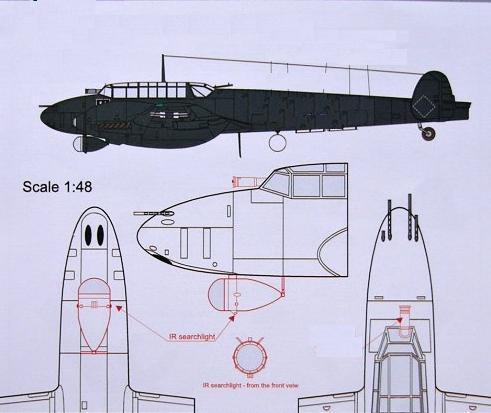
Sketch showing the location of the IR Searchlight beneath the nose of the Potez 631 and the IR Viewer location
This equipment was based on the Infrared searchlights and viewers used by the Maavoimat’s night-fighting tanks – and as such was readily available, quickly adapted and rapidly installed. By late May 1940, the Ilmavoimat’s first and only infrared equipped night-fighter squadron was up and running – unfortunately only in late May, by which time the long winter nights were fast fading. However, when vectored onto a target by Fighter Control, it occasionally proved possible for the fighters to actually illuminate the target and half a dozen Soviet bombers on night-bombing missions were successfully show down by the time the war ended.
After the Fall of France, significant numbers of Armée de l’Air Potez 630’s had fallen into German hands and many were impressed by the Germans, mostly to be used in liaison and training roles. The Ilmavoimat would go on to purchase some 40 ex- Armée de l’Air Potez 630’s in late 1941, after Finland’s relationship with Germany had improved somewhat from the somewhat glacial post-Helsinki Convoy chill. And again, the Finns used the supply of Nickel to Germany to exert pressure. These additional aircraft would be refurbished, re-engined, re-armed and over 1942 and 1943 would be equipped with Nokia-design and developed night-fighter aircraft radar. With new and more powerful engines, they would remain in use as night-fighters with the Ilmavoimat until the end of WW2, although by then they would not be the primary night-fighter type.
Somewhat incidentally, Finland’s strength and capabilities in the air would be augmented greatly by Polish Volunteers for the Ilmavoimat through the Winter War, especially in the last months of the War from June to September 1940. In part, Finland benefited from the pre-war agreements with Poland whereby each country agreed to act as a refuge for the other’s armed foirces in the event of war and if possible. The rescue by the Finns of many thousands of Polish military personnel from Latvia and Lithuania had strengthened this relationship, and that so many of these Poles volunteered to fight for Finland against the USSR further stregthened the mutual regard and feelings of gratitude and respect.
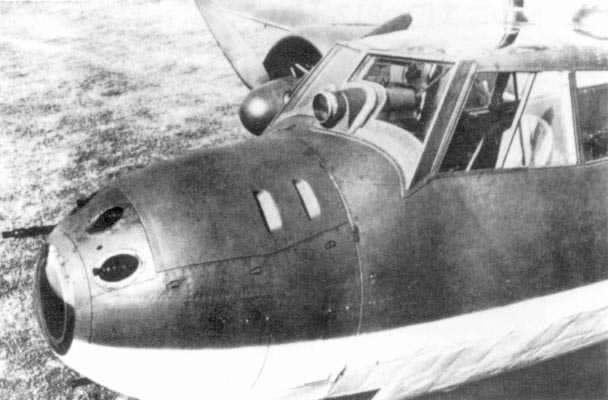
A Nokia-designed and developed Infrared display unit in the cockpit of the Potez-631 made the target visible.
After the collapse of France in May 1940, a large part of the Polish Air Force contingent in France was withdrawn or escaped to the United Kingdom. However, the RAF Air Staff were not willing to accept the independence and sovereignty of Polish Air Force personnel. Air Marshal Sir Hugh Dowding later admitted he had been “a little doubtful” at first about the Polish airmen. The British government informed General Sikorski that at the end of the war, Poland would be charged for all costs involved in maintaining Polish forces in Britain. Plans for the airmen greatly disappointed them: they would only be allowed to join the Royal Air Force Volunteer Reserve, wear British uniforms, fly British flags and they would be required to take two oaths, one to the Polish government and the other to King George VI of the United Kingdom; each officer was required to have a British counterpart, and all Polish pilots were to begin with the rank of “pilot officer”, the lowest rank for a commissioned officer in the RAF. Only after posting would anyone be promoted to a higher grade. Because of that, the majority of the Polish pilots, much more experienced than their RAF counterparts, had to wait in training centres, learning English Command procedures and language, while the RAF suffered heavy losses due to lack of experienced pilots.
This obviously did not go down well with either the Polish Airmen, General Sikorski or the Polish-government-in-exile. Thus, in discussions that were ongoing between Finland and the Polish-government-in-exile, when Finland asked for help from the Poles to provide personnel for the additional aircraft they were bringing into service, and offering equivalent ranks in the Ilmavoimat, together with the formation of 100% Polish squadrons flying under the Polish Flag, the Polish-government-in-exile was quick to agree. Personnel for four squadrons were formed up and moved to Finland in late June 1940. Equipped with aircraft by the Ilmavoimat that ahd been purchased from the USA, the Polish squadrons quickly became effective. As with their countrymen already in Finland, it was found that there flying skills were well-developed from the Invasion of Poland and their time in France and the Polish pilots were regarded as fearless and sometimes bordering on reckless. In other words, very similar to the Finns. Such was the success of these units that the Finns requested more volunteers, but by this stage the RAF, desperately short of personnel and now impressed by the performance of the Polish airmen they had slowly accepted, refused permission.
However, the RAF would still experience some communications problems…..
Some background on the Potez 631’s
The Potez 630 and its derivatives were a family of twin-engined aircraft developed for the French Armée de l’Air in the late 1930s. The design was a contemporary of the British Bristol Blenheim and the German Messerschmitt Bf 110. The original Potez 630 was built to meet the requirements of a 1934 heavy fighter specification which also resulted in the successful Breguet 690 series of attack aircraft. The prototype first flew in 1936 and proved to have excellent handling qualities. It was a pleasant-looking three-seater aircraft with an all-metal stressed-skin, cantilever monoplane with a retractable landing gear and twin engines, with efficient aerodynamic lines and twin tailplanes. The long glasshouse hosted the pilot, an observer or commander who was only aboard if the mission required it, and a rear gunner who manned a single flexible light machine gun.
Only very minor changes were required before the aircraft was placed in production with an order for 80 placed in 1937. Simultaneously 80 Potez 631 C3 fighters were ordered, these having Gnome-Rhône 14M radial engines rather than the Hispano-Suiza 14AB10/11 of the Potez 630. Fifty additional Potez 631s were ordered in 1938 (of which 20 were diverted to Finland). The Potez 630’s engines proved so troublesome that most units had re-equipped with the Potez 631 engines before WW2 began. The Potez 631 was an ineffectual interceptor, slower than some German bombers and 130 km/h slower than the Bf 109E, although it continued in service until the armistice. The Potez 633 exported to Greece and Romania saw more extensive service, in limited numbers. The Romanians used them against the USSR and the Greeks against Italy. A small number of Potez 633’s originally destined for China were commandeered by the French colonial administration in Indo-China and saw limited action in the brief French-Thai War in early 1941.
More than 700 Potez 630’s of various models were delivered by June 1940, with some 220 destroyed or abandoned, despite the addition of extra machine gun armament; the heaviest losses of any French type. Production was resumed under German control and significant numbers were impressed by the Germans, mostly for use in liaison and training roles.All members of the family shared pleasant flying characteristics. They were well designed for easy maintenance and later models had a heavy armament for the time (up to 12 light machine guns for the Potez 63.11). They were also quite attractive aircraft. Although not heavily built they proved capable of absorbing considerable battle damage. Unfortunately the Potez 630 family, like many French aircraft of the time, simply did not have sufficiently powerful engines to endow them with an adequate performance. In the stern test of war they proved easy meat for prowling Messerschmitts, like their British contemporaries, the Fairey Battle and the Bristol Blenheim. Their similarity to the Bf 110 (twin engines, twin tail, long “glasshouse” canopy) was sufficient that some were apparently lost to “friendly fire”. Unlike many contemporary French aircraft, production of the Potez aircraft was reasonably prompt and the first deliveries were effected before the end of 1938. The 630 had been designed with mass production in mind and as a result, one Potez 630 was cheaper and faster to manufacture than one Morane-Saulnier MS.406. As production tempo increased, a number of derivatives and experimental models were also developed.
A typical feature of the 630 and 631 was the frontal armament, which originally consisted of two 20 mm Hispano-Suiza HS.404 cannons in gondolas under the fuselage, though sometimes one of the cannons was replaced by a MAC 1934. Later in their career, 631s received four similar light machine guns in gondolas under the outer wings, though it was theoretically possible to fit six. In combat, the 630’s proved very vulnerable, despite being protected with some armour and basic self-sealing coating over the fuel tanks. As a secondary light bomber capability was part of the requirement (though it was rarely if ever used), the fuselage accommodated a tiny bomb bay, carrying up to eight 10kg-class bombs. This bomb bay was replaced by an additional fuel tank in late examples. Additionally, two 50kg-class bombs could be carried on hardpoints under the inner wings.
The dispatch of the Polish Second Infantry Fusiliers Division from France to Finland
Besides the two cargo ships that were dispatched with their sizable cargo of Caudron-Renault C.714 fighters (more on these below) together with munitions and the artillery pieces that the Maavoimat desperately needed, the small convoy also carried the Polish Second Infantry Fusiliers Division (15,830 soldiers) commanded by Brigadier-General Bronisław Prugar-Ketling.
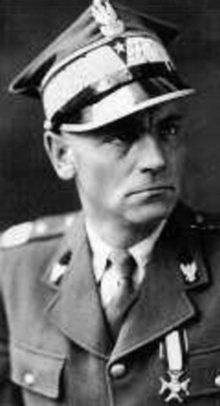
Brigadier-General Bronisław Prugar-Ketling (2 July 1891, Trześniów, Subcarpathian Voivodeship – 18 February 1948, Warsaw)
Brigadier-General Bronisław Prugar-Ketling (2 July 1891, Trześniów, Subcarpathian Voivodeship – 18 February 1948, Warsaw) was a member of the Polish Military Organisation in World War I, he later served in the Polish Blue Army. He went on to fight in the Polish-Soviet War. During the German invasion of Poland he commanded the Polish 11th Infantry Division in the Karpaty Army. Under his command the 11th I.D. defeated the mechanized groups of the SS “Germania” Regiment in the Battle of Jaworów. After escaping from Poland he arrived in France and was appointed to command the Second Infantry Fusiliers Division in “Sikorski’s Army” (the Polish Army in France). Eager to fight the Germans, he reluctantly acquiesced to the French decision to send his Division to Finland.
The Division had been assigned as part of the French reserves of the XXXXV Corps, but the French were more than happy to get rid of the Poles, whom they regarded as trouble-makers who had brought the Germans down on their heads. For their part, the Poles could not understand why the French did not want to fight. Thus the French were happy to dispatched considerable numbers of Poles, equipped by the French, to Finland.
In his Biography, Prugar-Ketling was later quoted as saying: “the French decision was the luckiest moment in my life. If the French had not decided to send my Division to Finland, I would have been trapped in France along with my men and we would have gone the way of so many other brave Polish soldiers, fighting and dying for a France that had already surrendered in all but word. With the Finns, were were able to keep on fighting, both to revenge oursevles on the Red Army for stabbing us in the back in 1939 and to defeat the Germans and go on to ensure Poland remained free.”
The Polish Second Infantry Fusiliers Division would arrive in Finland via Lyngenfjiord in early April 1940 and would be moved immediately to the Karelian Isthmus as a Reserve Division for the Maavoimat’s spring offensive. The Division would remain in Finland for the Winter War and for a time thereafter, before being shipped to the Middle East where they would fight with the British Army in the Desert War.
In late 1943 they would return to Finland, going on to take part in the Maavoimat’s Invasion of Estonia in early 1944 and then fighting their way southwards along the Baltic peripheral to Poland as part of the joint Finnish-Polish-Allied Army under the overall command of Marshal Mannerheim. The most well-known of the Second Infantry Fusiliers Division’s actions would be their move into Wilno (Vilnius) in the immediate aftermath of the successful Operation Ostra Brama (Operation Gate of Dawn), conducted by the Polish Home Army. Operation Ostra Brama had begun on 7 July 1944, as part of the Polish national uprising, Operation Tempest.
On 12 June 1944 General Tadeusz Bór-Komorowski, Commander-in-Chief of the Home Army, issued an order to prepare a plan of liberating Wilno from German hands. The Home Army districts of Vilnius and Navahrudak planned to take control of the city before the Soviets could reach it and in anticipation of the Maavoimat reaching them before the Red Army. In this, the Tehran Conference of November 1943, where Finnish Intelligence had gather evidence that Britain and the USA had agreed to the manipulation of the border between Poland and the USSR, was a key factor in the decision to laucnh the uprising. Both the Finns and the Polish Government-in-Exile were well aware of the concessions made to the USSR by Roosevelt and Churchill concerning post-war Poland. The USSR’s ruling triumvirate wished for an area in the Eastern part of Poland to be added to the USSR, and for the border to be lengthened elsewhere in the country. And to the shock of the Poles, Roosevelt and Churchill had agreed to this demand, agreeing that Poland’s borders would lie along the Oder and Neisse rivers and the Curzon line. In addition, Churchill and Roosevelt had also consented to the USSR setting up puppet communist governments in Poland, Czechoslovakia, the Baltic states, Romania, and other Eastern European countries. While the Polish government-in-exile in London had protested bitterly, the Finns were, through bitter experience of the duplicity of the Great Powers, rather less inclined to protest and rather more inclined to take matters into their own hands.
A group of Polish soldiers from the Second Infantry Fusiliers Division sings Dąbrowski Mazurka, the national anthem of Poland, prior to their departure for Finland.
And so it was that despite the large Allied presence with the Maavoimat in the Baltic, the Finnish High Command kept the Allied Units at the front fighting the Germans while Finnish and Polish units fought on the left of the offensive, where they could gain their own objectives. Thus, wherever possible German units were simply cutoff and bypassed as the Maavoimat moved to ensure they held the old Estonian, Latvian and Lithuanian borders – as indeed they managed to do. And Estonian, Latvian and Lithuanian army units werer rapidly raised and equipped from stockpiled lend-lease equipment (intended by the americans for the Finnish Army, but the Finns preferred to keep their own equipment and used the american equipment to fit out the Divisions of new volunteers – and also the Estonian, Latvian and Lithuanian units that had been fighting with the Germans but who promptly changed sides when their homelands were liberated.
The Commander of the Home Army District in Wilno, General Aleksander Krzyżanowski “Wilk”, decided to regroup all the partisan units in the northeastern part of Poland for the assault, both from inside the city and from the outside. The starting date was set for 7 July. Approximately 12,500 Home Army soldiers attacked the German garrison and managed to seize most of the city center. Heavy street fighting in the outskirts lasted until 14 July. In Vilnius’ eastern suburbs, the Home Army units initially cooperated with reconnaissance groups of the Soviet 3rd Belorussian Front. General Krzyżanowski wanted to group all of the partisan units into a re-created Polish 19th Infantry Division. However, the advancing Red Army entered the city on 15th July and the NKVD promptly started to intern all Polish soldiers. The internees, almost 5,000 officers, NCOs and soldiers, were sent to a provisional internment camp in Medininkai, a Vilnius suburb.
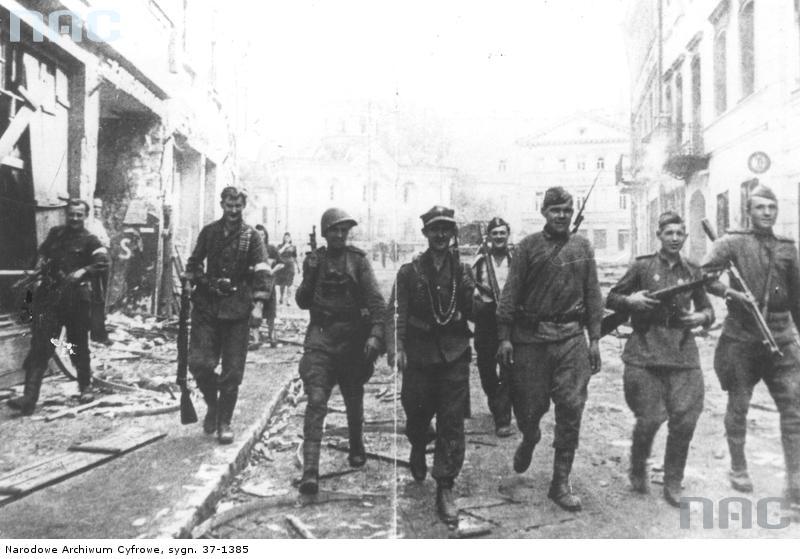
Battle of Vilnius. Soviet Red Army and Polish Armia Krajowa Soldiers patrolling in Vilnius, July 1944. The orthodox church of Vilnius is visible in background. The soldiers of the Second Infantry Fusiliers Division considered the liberation of Wilno and the freeing of their Home Army comrades from the NKVD as the highlight of their war. By this time the Polish and Maavoimat fighting troops were well aware of what had happened in the Soviet-occupied Baltic States during the Soviet occupation and to the Polish Officers in Katyn Forest in April and May 1940. “Allies” or not, no NKVD member could expect to survive a meeting with Maavoimat or Polish units – and as units of the Polish Army moved southwards into the rear of the 3rd Belorussian Front, many did not. And with the constant air cover and close air support provided by the Typhoons and Spitfires of the Polish Air Force and the fighters and fighter-bombers of the Ilmavoimat, the general attitude towards any Red Army unit that looked askance was “try it”. When accompanied by a flight of Polish Air Force Typhoons or the even more fearsome Ilmavoimat G1’s with their loads of bombs, rockets, napalm and cannon, there were generally no takers. And of there were takers, there were generally no survivors.
And Poles still remembered the Soviet stab in the back of September 1939….
Ballada wrześniowa (September Ballad) Lyrics – Jacek Kaczmarski
Długośmy na ten dzień czekali – We have waited for this day
Z nadzieją niecierpliwą w duszy – With impatient hope in our souls
Kiedy bez słów Towarzysz Stalin – For the moment when Comrade Stalin will silently
Na mapie fajką strzałki ruszy. – Move the arrows on a map with his pipe
Krzyk jeden pomknął wzdłuż granicy – One scream sounded along the border
I zanim zmilkł zagrzmiały działa – Before it stopped
To w bój z szybkością nawałnicy – The cannons had roared with the speed of a storm
Armia Czerwona wyruszała.- The Red Army had set off
A cóż to za historia nowa? – What is the story again?
Zdumiona spyta Europa,- A surprised Europe asked.
Jak to? To chłopcy Mołotowa – You do not know? It is Molotovs Boys
I sojusznicy Ribbentropa.- Ribbentrops allies.
Zwycięstw się szlak ich serią znaczy – A series of victories in their wake
Sztandar wolności okrył chwałą – Their flag of freedom covered in glory
Głowami polskich posiadaczy – The heads of the Polish possessors
Brukują Ukrainę całą. – Were used by them to pave the Ukraine
Pada Podole, w hołdach Wołyń – Padolia falls. Volhynia salutes!
Lud pieśnią wita ustrój nowy, – The people greet the new system with song
Płoną majątki i kościoły – The manors and churches are burning
I Chrystus z kulą w tyle głowy. – And the Christ has a bullet in the back of his head
Nad polem bitwy dłonie wzniosą – On the battlefield they will raise their hands
We wspólną pięść co dech zapiera – In a shared fist which takes the breath away
Nieprzeliczone dzieci Soso, – The countless childen of Soso
Niezwyciężony miot Hitlera. – Hitlers invincible litter
Już starty z map wersalski bękart, – Versailles bastard is wiped off the map
Już wolny Żyd i Białorusin – Jew and Byelorussian are set free
Już nigdy więcej polska ręka – Polish hand will nevermore
Ich do niczego nie przymusi. – Force them to do anything
Nową im wolność głosi “Prawda” – Pravda preaches their new freedom to them
Świat cały wieść obiega w lot, – The whole world is quickly informed
Że jeden odtąd łączy sztandar – That from this day there is one banner
Gwiazdę, sierp, hakenkreuz i młot. – Star, Sickle, Hammer and Swastika
Tych dni historia nie zapomni, – History will not forget these days
Gdy stary ląd w zdumieniu zastygł – When the old continent froze in surprise
I święcić będą nam potomni – And our descendants will celebrate
Po pierwszym września – siedemnasty. – After the first of September – the Seventeenth
I święcić będą nam potomni – And our descendants will celebrate
Po pierwszym – siedemnasty. – After the first of September – the Seventeenth
Soviet Backstabbing – July 1944
On 16th July the HQ of the 3rd Belorussian Front invited Polish officers to a meeting with the intent of arresting them. The local Home Army HQ had been in communication with the Maavoimat throughout the uprising but despite this, there was still a certain amount of shocked surprise at the betrayal by the Red Army. A secret NKVD/NKGB report dated July 17, 1944, from Lavrenti Beria to Litvonov, Molotov, Antonov and Zhadanov reveals the extent of the Soviet conspiracy against Polish forces. The following is an English translation:
July 17, 1944, Moscow
L. Beria to M. Litvonov, V. Molotov, A. Antonov, A. Zhdanov
Forwarding report(s) of [Ivan] Serov and I. Tcherniakovsky
[Concerning] Arrest of Lt. Col. Aleksander Krzyżanowski, and planned disarming of Polish [Armia Krajowa – Home Army] military formations.
Following information was received today from Comrade Tcherniakowsky:
The so-called Major-General “Wilk” / “Kulczycki” was summoned today. Wilk was told that we are interested in the locations of Polish formations, and that it would be prudent that our officers were familiar with them. Wilk agreed, and gave us 6 such locations, where his regiments and brigades are stationed. Additionally, we expressed our interest in his officers’ core, and proposed that he gathers all regimental and brigade commanders, their second in command, and chiefs of staff. “Wilk” also agreed to that, issued the necessary orders, and gave them to his communications officer, who immediately left for his headquarters.
After that, “Wilk” was disarmed [and arrested]; present at the time was a captain – the Chief of Staff who represents [the Polish] Government in London, who attempted to draw his side arm in order to resist, he cocked his gun, but was disarmed [and arrested as well]. Taking under consideration, that we received locations of Polish [Home Army] formations, the following operations’ plan was established
1) Experienced generals and People’s Commisars for the State Security of NKVD were dispatched in order to approach the Poles and to investigate [further].
2) At the same time, units of the 3rd Belarusian Front were dispatched to disarm the Poles.
3) Today, at 1900-hours, a Border Security unit, as well as the leadership cadre of men and women of the NKVD were dispatched to disarm the [Polish] officers’ cadre.
4) Tomorrow, on 18th July, at 4 o’clock in the morning, units designated to disarm the Poles will be move to their deployment positions, will receive orders, and will begin the operation. They will report about the results of the operation.
The Maavoimat reacted with an aggressiveness that brought the Soviet moves to an abrupt halt. The Second Infantry Fusiliers Division, supported by a Polish Armoured Regiment and squadrons of the Polish Air Force moved towards Wilno, eliminating any Red Army units that attempted to resist them and seizing and disarming those few that did not. Detachments of the Division headed straight for the provisional internment camp in Medininkai. The NKVD’s Battalion 32, which had been guarding the Poles and interrogating them to determine which were to be sent to the USSR, had begun executing Officers and NCO’s on news of the Polish Division’s approach. However, they had only just begun when Polish armoured and mechanized units roared into the camp and began their own extermination program.
In the subsequent fighting in and around Wilno, some 6,000 Red Army soldiers and NKVD personnel were killed, while some 12,000 Red Army soldiers were wounded and subsequently handed over to the Red Army after fighting ended. No NKVD wounded were available to be handed over. Remnants of the Red Army units in Wilno retreated into the nearby Rūdininkai Forest. They were soon discovered by Ilmavoimat air reconnaissance and surrounded by the Polish Home Army. Red Army Commanders decided to split their units and try to break through to the Red Army but most were caught and interned. The Second Infantry Fusiliers Division and the newly formed Polish 19th Infantry Division under General Krzyżanowski would hold the Polish areas around Wilno in strength until the end of WW2, eventually moving up to the pre-war Polish border. Other units of the Polish Army would move southwards into the rear of the 3rd Belorussian Front in strength while their advance towards East Prussia was cut off by Maavoimat Divisions surging south.
The Soviet High Command would reluctantly acqueisce to the Maavoimat’s seizure of north-eastern Poland and move their Divisions southwards in a move to seize southern Poland rather than enter into open conflict with the Finnish Army. This would lead to some post-war difficulties.
General Aleksander Krzyżanowski (known as “Wilk”, “Wesołowski”, “Dziemido”, “Jan Kulczycki”), was born in Bryansk and was conscripted into the Russian Army during the First World War, where he first started to specialize in artillery. After Poland regained independence in 1918 he joined the Polish military, and fought in the Polish-Soviet War where he distinguished himself in 1919 receiving the Krzyż Walecznych medal, and in January 1920 he took part in the heavy fighting at the Battle of Daugavpils. During the interwar period in the Second Polish Republic he further continued his military career. At the time of the Nazi invasion of Poland (September 1, 1939) he was commanding the 26th Regiment of Light Artillery, attached to the Polish 26th Infantry Division, part of the Army Poznań under General Tadeusz Kutrzeba. His unit was destroyed during the battle of Bzura.
Soon afterward he organized a partisan unit at Świętokrzyskie Mountains, but after this unit was defeated by the Germans he arrived in Warsaw by late October, and joined the first Polish resistance organizations, the Służba Zwycięstwu Polski. By November he was assigned to Wilno (now known as Vilnius, Lithuania), at the same time occupied by the Soviet Union which divided Poland with the Nazi Germany according to the Molotov-Ribbentrop Pact. The SZP soon transformed into the Związek Walki Zbrojnej. When in April 1941 the Soviet NKVD arrested the commander of the ZWP in the Vilnius region, General Nikodem Sulik, it was Krzyżanowski who de facto replaced him, and his position was officially confirmed by General Stefan Rowecki in August. In 1942 ZWP was transformed into Armia Krajowa (AK).
Krzyżanowski attempted to build a larger anti-German coalition and issued explicit orders that no ethnic group, including Jews, should be mistreated. He also opened negotiations with the representatives of the Lithuanian and Belorussian resistance but these proved fruitless. The negotiations with the Soviets initially lead nowhere as well. The Soviet Union aimed to ultimately regain control from Germany over the territories the USSR had annexed from Poland in 1939 and the Politburo’s aim was to ensure that an independent Poland would never reemerge in the postwar period. The relationship between the Soviets and the Sikorski Polish government in exile, formally a commanding force of the AK, was strained at best, especially in the wake of the evidence of the mass execution of the Polish POW officers by the Soviets that were in 1943 widely publicized by the Nazis.
With Soviet partisans increasingly engaged in terror against the local population and attacking Polish Home Army units, local AK commanders considered the Soviets just another enemy. As ordered by Moscow on June 22, 1943 the Soviet partisans started an open fight against both the German forces and the local Polish Home Army partisans. In January and February 1944, in the wake of growing hostilities between the Soviet partisans and the AK forces, Krzyzanowski conducted a series of negotiations with Germans. Following negotiations with the Nazi German Security Service and Julian Christiansen, the Chief of the Vilnius Abwehr, cooperation between the Germans and the AK was established in the area of Krzyżanowski’s units’ operation. While Krzyzanowski refused to sign an explicit agreement on cooperation, a secret arrangement was made that the AK would “capture” the armaments and provisions left to them by Germans.
However any such arrangements were purely tactical and did not evidenced a type of ideological collaboration as shown by the Vichy regime in France, the Quisling regime in Norway or closer to the region, the Organization of Ukrainian Nationalists. The Poles’ main motivation was to gain intelligence on German morale and preparedness and to acquire some badly needed weapons. There are no known joint Polish-German actions, and the Germans were unsuccessful in their attempt to turn the Poles toward fighting exclusively against Soviet partisans. Such collaboration of local commanders with the Germans was generally atypical and usually occurred due to local circumstances – such incidents were condemned by the AK High Command.
In May 1944 Polish resistance units in the Wilno area were attacked by the Local Lithuanian Detachment under General Povilas Plechavičius. Krzyżanowski attempted to negotiate, but Plechavičius demanded that AK and all Polish partisans retreat from the Wilno region and accept Lithuanian sovereignty over that territory. Krzyżanowski would not agree to such a withdrawal and the fighting escalated, eventually culminating in the Polish victory over the Lithuanian collaborationist forces in the battle of Muravanaya Ashmyanka of May 13-May 14. After that battle Krzyżanowski attempted to resume negotiations but was ignored by the Lithuanian side. The increasing hostilities culminated in June 1944, when pro-NaziLithuanian Security Police forces, which had recently suffered a loss of several members in a skirmish with the AK, massacred 37 Polish civilians in Glinciszki, a village known to support the Polish partisans. Later accusations of widespread massacres made by the Lithuanians against the AK are false and were intended to counteract accusations of widespread German-Lithuanian collaboration and crimes committed by units such as the Lithuanian Secret Police .
Beginning in the spring of 1944 the Polish underground was preparing for the major Operation Tempest, which was designed to cause a large scale uprising behind the German lines to prevent a Soviet takeover of the territory by establishing a local Polish administration before the arrival of the Red Army, as a sign to the entire world that the Polish government in exile commanded significant Polish forces. Operation Tempest would also support of the Soviet Eastern Front offensive. By this time Finland had made a decision to enter the War against Germany and a new and secret Branch of the Finnish Security Service (Suojelupoliisi / Skyddspolisen, abbreviated as SUPO) had been established to support the underground movements in the Baltic States in Poland. Ilmavoimat aircraft began to fly regular supply missions as contacts were established, providing arms, ammunition, radios and training (special teams from the Maavoimat’s Osasto Nyrkki “Fist Force” were inserted to train Polish Home Army members for example. Immediately prior to Operation Tempest commencing, large supply drops had been made and additional Osasto Nyrkki troopers flown in to support and liase with AK units.
After the Poles and Soviets defeated the Germans and captured Wilno on July 17, 1944, Polish officers, including Krzyżanowski, who had been invited to a debriefing with the Soviets, were arrested and briefly imprisoned before being liberated. He would go on to command the 19th Infantry Division (Polish Army) which was formed immediately from Home Army units and equipped from Finnish stockpiles of lend-lease equipment. The 19th Division, the Second Infantry Fusiliers Division and a further newly-formed Division, the 23rd Infantry, would secure the Wilno Region through to the end of WW2. Krzyżanowski health collapsed in 1951 and he died on September 29 of that year from tuberculosis.
Polish Wilno in 1936….
The Caudron-Renault C.714 fighters
The two cargo ships that made up part of the small convoy in addition to artillery pieces and a sizable shipment of artillery shells also carried some forty Caudron-Renault CR714 fighters, in both cases together with Polish pilots and Polish ground crew together with a small team of French engineers to manage the re-assembly of the aircraft on arrival. That these aircraft were actually shipped was again in large part due to the marked emphasis that the French Premier, Paul Reynaud, had placed on visible aid to Finland. Much was made in the French Press of the shipments of aircraft and artillery to Finland – an astute move by Reynaud to at least alleviate some of the pressure from the Right. Even if the move didn’t succeed in bringing them onside, it at least satisfied them to a certain extent. There was no mention of the dispatch of the Polish Division however – it was feared that this might cause problems with the Soviet Union and this was something that caused some trepidation in both Britain and France, even if there were circles in both countries that advocated attacking the USSR as an open ally and source off critical war materials for Germany.
Finland won the propaganda war from the start – and public sympathy in France was strongly on the side of Finland. With the Finnish military successes of early 1940, this added to the pressure on Reynaud to do more than make token gestures.
The C.710 were a series of fighter aircraft developed by Caudron-Renault for the French Armée de l’Air just prior to the start of World War II. The original specification that led to the C.710 series was offered in 1936 in order to quickly raise the number of modern aircraft in French service, by supplying a “light fighter” of wooden construction that could be built rapidly in large numbers without upsetting the production of existing types. The contract resulted in three designs, the Arsenal VG-30, the Bloch MB-700, and the C.710. Prototypes of all three were ordered. The original C.710 model was an angular design developed from an earlier series of air racers. One common feature of the Caudron line was an extremely long nose that set the cockpit far back on the fuselage. The profile was the result of using the 450 hp (336 kW) Renault 12R-01 12-cylinder inline engine, which had a small cross section and was fairly easy to streamline, but very long. The landing gear was fixed and spatted, and the vertical stabilizer was a seemingly World War I-era semicircle instead of a more common trapezoidal or triangular design.
The C.710 prototype first flew on 18 July 1936. Despite its small size, it showed good potential and was able to reach a level speed of 470 km/h (292 mph) during flight testing. Further development continued with the C.711 and C.712 with more powerful engines, while the C.713 which flew on 15 December 1937 introduced retractable landing gear and a more conventional triangular vertical stabilizer. The final evolution of the 710 series was the C.714 Cyclone , a variation on the C.713 which first flew in April 1938, as the C.714.01 prototype. The primary changes were a new wing airfoil profile, a strengthened fuselage, and instead of two cannons the fighter had four 7.5 mm MAC 1934 machine guns in wing gondolas. It was powered by the newer 12R-03 version of the engine, which introduced a new carburettor that could operate in negative g.
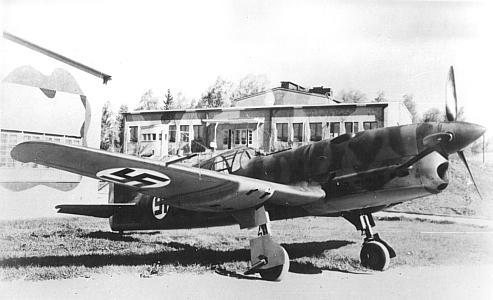
The Caudron-Renault C.R. 714 was a single-seat cantilever low-wing monoplane with a wooden structure and retractable main undercarriage. Armament consisted of four 7.5 mm MAC 1934 machine guns in the wing gondolas. They had a maximum speed of 286 mph, a range of 560 miles and were powered by a single Renault 12R 03 inverted V-12 500hp inline piston engine)
The Armée de l’Air had ordered 20 C.714s on 5 November 1938, with options for a further 180. Production started at a Renault factory in the Paris suburbs in 1939. After a series of tests with the first production examples, it became apparent that the design was seriously flawed. Although light and fast, its wooden construction did not permit a more powerful engine to be fitted. The original engine seriously limited its climb rate and manoeuvrability with the result that the initial production order was reduced to 90, as the performance was not considered good enough to warrant further production contracts. After the fall of Poland in 1939, delivered C.714’s were assigned to Polish pilots flying in France (the Polish Warsaw Squadron – the Groupe de Chasse polonais I/145, stationed at the Mions airfield). After just 23 sorties, an adverse opinion of the fighter was confirmed by front-line pilots who expressed concerns that it was seriously under-powered and was no match for contemporary German fighters.
The Caudron fighter was also used by the Polish training squadron based in Bron near Lyon. Although the pilots managed to disperse several bombing raids, they did not score any kills although they also did not lose any machines. French Minister of War Guy la Chambre ordered all C714s to be withdrawn from active service. However, since the French authorities had no other aircraft to offer, the Polish pilots ignored the order and continued to fly the Caudrons. Despite flying a fighter hopelessly outdated compared to the Messerschmitt Me 109E, the Polish pilots scored 12 confirmed and three unconfirmed victories in three battles, losing nine Caudrons in the air and nine more on the ground. Interestingly, among the planes shot down were four Dornier Do 17 bombers, but also three Messerschmitt Bf 109 and five Messerschmitt Bf 110 fighters.
In total, 98 C714’s were delivered, with 18 lost in combat. The French government decided to divert the remaining eighty to Finland within days of Reynaud taking office – a decision made easier by the decision that these aircraft should be withdrawn from combat. Reynaud was firm on making a visible commitment and in this way, the commitment could be made very publicly – eighty aircraft was a sizable number indeed – and at the same time the Armée de l’Air could rid itself of aircraft that would otherwise just have been scrapped. They could also get rid of some of those annoying Poles, thus killing three birds with one stone. It was a very French solution. Forty of the aircraft were crated for shipment and moved to Le Havre together with the Polish personnel, from where they were loaded and shipped almost immediately.
The Ilmavoimat pilots who test flew the aircraft after their delivery found that they were difficult to start. The aircraft was found to be both unreliable and dangerous to use in Finnish winter conditions and landing the aircraft at front-line air bases was a hazardous undertaking. However, the Polish Pilots had other ideas. They had flown and fought the Luftwaffe successfully in France and they demanded to stay and fight with the Finns, even if it meant they would be flying the CR714’s. There case was that they were fighter aircraft, they had guns and they could be flown – and they knew what they were doing. The Ilmavoimat agreed and the Poles would man two squadrons of the aircraft, flying them throughout the Winter War together with some French volunteers who were permitted to remain by the French government – and who stayed on after the fall of France. Thus despite their unsuitability they were used in combat and inflicted significant losses on the Soviet Air Force. A small number were lost to Soviet fighters, more were lost in accidents on landing and takeoff than were lost in combat. The CR.714 aircraft were permanently grounded on September 10 1940, and were taken out of service completely in 1941, with combat flights prohibited. The aircraft were maintained on the roster until they were retired and scrapped on 30 December 1949.

Following the demand from the Polish Pilots to be permitted to fly the Caudron-Renault C.R. 714’s in combat, the Ilmavoimat agreed that the two squadrons be flagged as Polish.
Arms and Artillery from France
And a note: thanks to http://www.jaegerplatoon.net and Jarkko for much of the information on, and photos of, the actual guns. All the alternative history around them is of course, mine.
Well prior to both the Winter War and the Defence Budgets of the 1930’s, the Maavoimat decided to test new and modern French field guns for possible further acquisitions intended to build up the Maavoimat’s artillery strength.
To this end, four French Schneider-manufactured 76 K/22 (76 mm Cannon Model 1922) were purchased and arrived in 1926. Designed by Schneider in the early 1920’s, France didn’t buy any as it had an enormous stock of surplus Canon de 75 modèle 1897 field guns on hand and as a result, the Schneider 76 mm Cannon Model 1922 was offered for export.The test guns were French export models manufactured specifically in 76.2-mm x 385R calibre for Finland, so they could use the same ammunition as the 76 K/02. The weight of the gun was 1,320kgs, maximum range was 12,000 meters, calibre was 76mm, shell weight was 4.82 to 6.35kgs.
In addition, four St Chamond-manfactured guns in the same calibre, the model 76 K/23 (St. Chamond 76mm cannon model 1923) were bought for evaluation in 1926. This gun failed to meet expectations and no more were bought. The main weakness was that the carriage was too weak. In the end however, as will be mentioned in an upcoming Post on Maavoimat Artillery, the results of the evaluation of these guns had been disappointing and as the artillery arm of the Maavoimat was strengthened through the period between 1935 and 1938, a considerable number of the Skoda 75 mm Model 1935 Field Guns and a rather smaller number of the Škoda 149 mm K (149 H33) had been purchased.
The Skoda 75 mm Model 1935 gun had been the Maavoimat’s light artillery weapon of choice – it was a mountain gun manufactured by Skoda Works, in Czechoslovakia (a variant was produced in Russia as the 76 mm mountain gun M1938) and Skoda delivered Finland a compatible 76mm version. The gun was light, easy to transport, could be broken down into 3 sections, and further broken down into ten horse loads (summer) or sledge loads (winter). The gun crew was given some protection by an armoured shield. As we will see, the Finnish Army had placed a large initial order with Skoda Works, the Czechoslovakian arms manufacturer, in 1935 with delivery scheduled over 5 years. Initial shipments commenced in mid-1936.
At the same time, the Maavoimat also licensed the design for the Skoda 76mm and Skoda worked with VTT (the Finnish State Gun Factory) to set up a production line. This was an involved process with specialised machinery and training required, resulting in the line being eventually up and running only by late 1937. Over 1938, approximately 100 guns were produced and even with the move to double shifts in late 1938 after the cancellation of the Skoda deliveries, output was raised by only 50% as there were serious bottlenecks in areas such as the supplies of barrel blanks and machined parts. In addition, contracts had been placed within Finland with Ammus Oy for the setting up of munitions production lines for both the Skoda 76mm and for the Bofors/Finnish designed and Tampella-built 105mm Howitzer.
Unfortunately for Finland, the Munich Crisis and the seizure and dismemberment of Czechoslovakia had led to deliveries of the Skoda 76mm being cut short as Germany took over all Czech arms output. Finland protested to Germany over this, but to no avail. Fortunately, payment was being made on delivery to Finland and while there were no financial losses involved, only 60% of the numbers ordered had been delivered when the order was abruptly curtailed.
The planned TOE for artillery units being equipped with the Skoda 76mm was incomplete and as a result, in early 1939 the Maavoimat began looking for alternatives. In the end, this boiled down to the French as British manufacturing capacity was going towards equipping their own forces (although in the end, after the Winter War had started, they would sell artillery pieces to Finland) and France had the industrial manufacturing capacity and was willing (with suitable incentives to the appropriate French politicians – something that Finland reluctantly and rather distastefully arranged) to sell. The end result was the placement of two orders.
Schneider-manufactured 76 K/22 (76 mm Cannon Model 1922) – 100 ordered in March 1939, delivered between August and December 1939
In March 1939, an emergency order for 100 of the Schneider 76 K/22 (76 mm Cannon Model 1922) guns had been placed. The gun was not considered perfect but the French government had agreed to the sale and Schneider had agreed to rush the manufacturing through (although in practice they did no such thing). A first batch of 36 was delivered in August 1940 and the remainder of the order was delivered in December 1939, shortly after the outbreak of the Winter War.
Schneider 105 K/13 (105mm Cannon Model 1913 / Canon de 105 mle 1913 Schneider)
One of the Maavoimat’s major weaknesses that had been identified in the 1931 Defense Review was in Heavy Field Guns. This was a serious weakness in that without such guns, counter-battery capability and striking targets far behind enemy lines was impossible, placing the Maavoimat at a serious disadvantage in battle. Before the Winter War Finland had managed to improve the situation by buying a number of the Škoda 149 mm K (149 H33) guns from Czechoslovakia (again, the deliveries of these guns were cut short after the Munich Crisis). It had also proved possible to buy an additional 114 heavy field guns from the Germans (despite the somewhat icy relationship after the Skoda Works orders were cancelled).
However, even after these purchases, Finnish long range artillery capabilities remained weak and were a source of serious concern, particularly as pressure and threats from the Soviet Union grew in intensity. The end result was that in conjunction with the March 1939 order for the Schneider 76 K/22 (76 mm Cannon Model 1922), the Maavoimat had contracted with the French government for the purchase of 150 pieces of the Canon de 105 mle 1913 Schneider.
The gun had its origins in the early 1900’s when the French company, Schneider et Cie, began a collaboration with the Russian Putilov company. For this collaboration, it had developed a gun using the Russian 107 mm round, which was ordered by the Russian Army to be produced in Russia (though the initial batch of guns was made in France). Schneider then decided to modify the design for the French 105 mm round and offer it to France as well. Initially the French army was not interested in this weapon as they already had plenty of 75 mm field guns and not seeing the use, they ordered only a small number.
However, the lighter 75 mm guns had proved of limited use in trench warfare of WWI and so the French army ordered large numbers of the L 13 S, which with its larger 15.74 kg (34.7 lb) shell was more effective against fortified positions. After the end of WWI, France had large numbers of these guns (some 1300 in all), many of which were considered surplus to requirements and so many Schneider 105 mm guns were sold or given away to various other countries, including Belgium, Czechoslovakia and Estonia. The gun was also manufactured under license in Italy, Poland and Yugoslavia.
The gun had a box trail, gun shield, wooden wheels with steel hoops (the maavoimat fitted rubber tired wheels on delivery) and a recoil system of hydraulic buffer + pneumatic recuperator independent from each other located under the gun barrel. The Breech System had a screw breech. Ammunition was the cartridge seated type with two propellant charge sizes and ammunition with reduced propellant charge. The guns were horse-towed with a maximum speed of about 10 km/h. Rate-of-fire was about 4 shots per minute. A Cannon Wagon was used in front of the gun when horse-towed and carried 14 shots for the gun. In France they remained in large-scale use even in 1940, when the Germans managed to capture about 700 of them. German military called the gun 10.5 cm Kanone 331 (f) and used them both as field guns and coastal guns.
The Finnish order of March 1939 for 100 of the Scheider 105mm Cannon Model 1913 was met with a single shipment of existing pieces from French Army storage depots. In addition, approximately 250,000 shells were supplied (again, from the large existing French stockpiles) and these were delivered in the Summer of 1939 by ship to Turku. In September 1939, after war with Poland had broken out, Finland placed an emergency order for a further 150 of the guns. After some considerable time, this was approved and a shipment of 12 guns was delivered in February 1940 together with 20,000 shells. In March 1940, an additional 38 guns together with a further shipment of 85,000 shells were shipped together with the Polish Division. The guns would enter service in May 1940.
In Maavoimat service, they gained a reputation as an effective and durable artillery piece. They were only declared obsolete in the late 1960’s. The remaining 100 guns of the order would not be delivered.
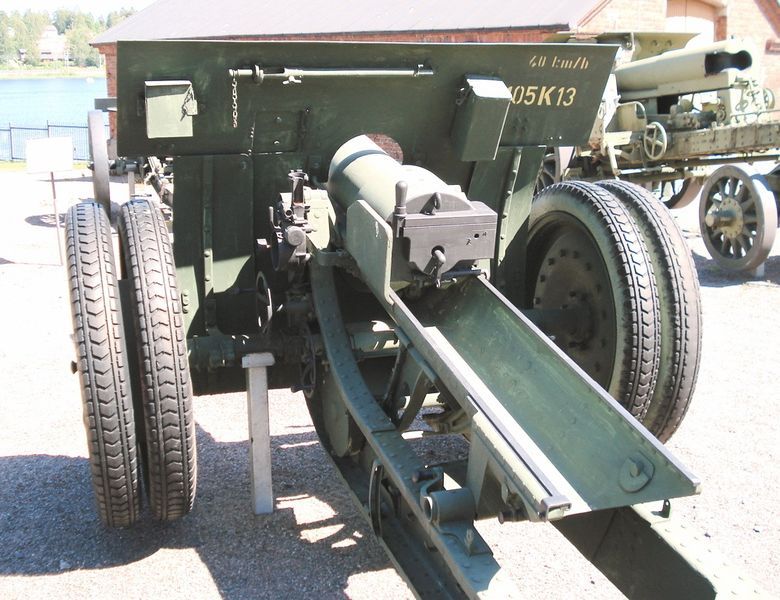
A French 105 mm M1913 Schneider gun, displayed in the Hämeenlinna Artillery Museum. The barrel of this particular gun was manufactured in 1918 and the gun carriage in 1916. The rubber tires were added after the gun was brought into Finnish service. The gun had a combat weight of 2,300kgs, a calibre of 105mm x 390R (cartridge seated ammunition) and a maxium range of 12kms. Shells weighed 14.9kg and were HE.
Arms Aid from France to Finland after the outbreak of the Winter War
The 90 K/77 (90mm Cannon Model 1877) – 136 of these were donated to Finland
Note on sources: Please note that photos and much of the information below on Finnish Artillery is sourced from www.jaegerplatoon.net courtesy of Jarkko. Any mistakes however are mine, as are the deviations into alternative history…
France had lost the War of 1870 – 1871 was against Germany. One of the main reasons for that was that French artillery had not been as up to date as German artillery. This gave an impetus to the French to introduce new artillery weapons for their Army in the late 1870’s. However, when in 1914 the French Army still found itself facing a shortage of \modern artillery weapons, the old “Mle 1877” and “Mle 1878” field guns were re-introduced for use even though they were verging on obsolete then. Over the course of WW1, France managed to replace most of these old guns with modern artillery pieces, but as the old “Mle 1877” and “Mle 1878” guns had served well and were still effective, they were carefully stored for possible future use by the Reserve units of the French Army. When WW2 started, the French considered issuing the old guns for use on the Maginot-line, but instead decided to leave them in their warehouses.
Despite the ongoing buildup of the Finnish Armed Forces through the 1930’s, there was still a shortage of Artillery within the Maavoimat when the Winter War started at the end of November 1939. The Maavoimat had built up a considerable strength in Artillery but with the first total mobilization in Finnish history, together with the arrival of thousands of volunteers, there was a serious shortage of artillery and ammunition. As a result of this situation, Finland was willing to buy just about any artillery any country was willing to sell and once more asked France about purchasing artillery. France refused to sell any modern artillery but with the political optics of being seen to assist Finland in mind, the French Prime Minister, Édouard Daladier advised that France was willing to donate large number of older “Mle 1877” and “Mle 1878” artillery guns (which the French no longer had any use for) – and these guns could be delivered with large amounts of readily available ammunition. Large numbers of these guns were promised, and Finland gratefully accepted – particularly as they were being donated rather than sold.
Assembling and shipping the guns and ammunition took time. Not only did it take time to extract them from the storage depots in France, they needed to be moved to the docks, a suitable ship found and passage arranged. As it was, the first shipment of 24 guns (all the “90 K/77” model) reached frontline units only in mid-March 1940. These first guns were shipped from France to Narvik in Norway. From Narvik they were transported by rail through Norway and Sweden to the Finnish border at Torneå/Tornio. At Tornio they had to be reloaded onto Finnish trains, as the Finnish railways guage was different to the Norwegian and Swedish. Once in Finland, the guns were taken to artillery depots, where they were checked before being issued. These French guns proved to be in much better shape than the old Russian artillery pieces that the Finns already possessed – also originally introduced in 1870’s. Not only were the guns in better condition, but the ammunition that the French ammunition supplied with the guns proved more reliable.
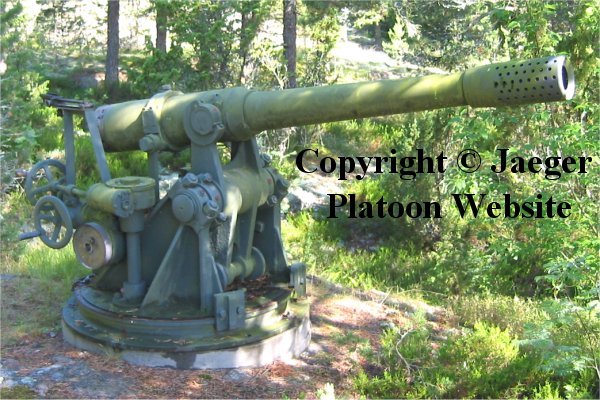
French-supplied 90 K/77 (90mm Cannon Model 1877) fitted to static fortification gun-carriage and used in Coastal Defence positions
Originally designed for direct fire only, the 90 K/77 had later had been equipped for indirect fire capability. The gun had a box trail and wooden wheels with steel hoops. Ammunition used was the bagged-type typical of the period (the propellant was packed in bags and was loaded separately from the projectile and primer). Even with the small caliber, these guns had a very slow rate of fire – only 1 shot per two minutes. France donated 100 of these guns together with 100,000 shells, primers and propellant. They weighed 1200kg, had a maximum range of 9.7kms and fired an HE shell weighing 8.2-8.4kg. A Goniometer, Aiming Ruler and Mirror were the usual instruments used for measuring the azimuth for these older French guns. Correct elevation was measured with a quadrant. Sometimes instruments had to be improvised: If the correct azimuth measuring instruments was missing or there was not enough light for using them, a Finnish military compass with its phosphorous needle could be used instead.
In the end, France shipped 136 of these guns and some 305,000 shells. The remainder of the guns and ammunition were shipped on on the two cargo ships that made up a part of the small convoy to Lyngenfjiord and would only arrive in early April 1940. They were still being unloaded when the Germans attacked Norway and the Maavoimat seized the Finnmark in a pre-emptive action that has been mentioned previously. By the time the remaining guns reached the front, the Maavoimat had established defensive positions that stretched from the outskirts of Leningrad on the Karelian Isthmus, along the Syväri and thence to the Veininmeri (White Sea). The 90 K/77’s were not suitable for mobile warfare, being slow to move. Consequently, the Maavoimat decided to use them on the Syväri Fortifications, and there they served through to the end of the Winter War, by which time their ammunition had started to run low and a considerable number had been lost in action.
After the Treaty with the USSR had been concluded, a small number of surviving guns were used to augment existing Coastal Defence positions and were fitted to static fortification gun-carriages. The gun-carriage could be bolted either to a concrete structure or to a heavy timber frame. Some 50 carriages were ordered from the Värtsilä factory in late 1940. By late 1943, these had been completed and installed in a number of existing coastal battery positions although they were never used in action and were finally declared obsolete in the 1960’s. The guns not ear-marked for use were placed in storage. After WW2 ended, these guns became popular for monumental use.
The 120 K/78 (120 mm Cannon Model 1878) – 72 of these were donated to Finland
The 120mm Cannon Model 1878 was the medium-calibre French de Bange gun. The Fremch had continued to use these throughout WWI and they also saw some use with the Serbs. The gun was usually used with cingali wheel plates (known as “Centure de Roues” by the French) fastened to the wheels with in order to reduce recoil. The gun used bagged ammunition.
The weapon also had a specially designed recoil reduction system, which was installed in end of the box trail. The wheels were usually wooden with steel hoops. The gun had been intended to be towed by 6 – 8 horses, but it was slow to tow (only about 4 km/h) and getting the gun ready to fire once it had arrived in its position took about an hour. In the French use the average rate of fire for this gun was about 1 shot per minute (or 46 – 50 shots per hour).
France donated 72 of these guns early in the Winter War together with 96,000 shells. They weighed 3750kg, had a maxium range of 12.4kms and fired an HE shell weighing 18.8-20.0kg. The entire shipment arrived in early April together with the bulk of the 90 K/77 guns. They were issued to artillery units and usage was all on the Karelian Isthmus, where the heaviest of the Red Army offensives took place. As usual the gun was turned around to the correct azimuth by prying the end of the gun trail with crowbars. The aiming system was on top of the breech and a mirror used for determining the correct azimuth was on the left side of the gun carriage. In the early 1930’s the Poles developed an improved version by installing the barrels of this 120-mm French gun onto the carriages of Russian 152-mm howitzers. The resulted combination was called “120mm wz. 1878/09/31” and “120mm wz 1878/10/31” by the Poles – and was also used by the Finns during WW2, becoming known as the “120 K/78-31” in Finland.
The Maavoimat had shortage of heavy long-range cannon and the 120 K/78’s were often used in roles which in other Armies were usually carried out using modern heavy cannon or howitzers. Finnish soldiers found the guns to be surprisingly accurate and with quite effective HE projectiles. The Maavoimat usually transported the guns with trucks. Towing the whole gun proved somewhat problematic, so the barrel was usually removed and transported in the truck while the rest of the gun was towed. The lifting ring on top of the gun barrel was useful for removing the barrel and reinstalling it, but a small crane was needed for the job – meaning the guns were not at all mobile. With hard training and experience Finnish gun crews also managed to raise the rate-of-fire to 2 shots per minute.
The guns saw heavy use on the Isthmus, in particular during the Red Army’s summer offensive – when 16 guns had to be left behind in June 1940 when Finnish troops temporarily retreating in the face of overwhelming Red Army numbers had to withdraw rather faster than anticipated. And in the final Soviet attacks of late August 1940, a Soviet unit managed to surprise the 78th Fortification Artillery Battery in the Karelian Isthmus sector, capturing its guns and taking two of them back to their own side of frontline. These guns fired their last shots of the Winter War on 24th of September 194, after which they were placed in storage.
The 155 K/77 (155 mm Cannon Model 1877) – 48 of these were donated to Finland
France had introduced two versions of the 155-mm de Bange gun in the late 1870’s. From those two this was the long-barrelled version. Like other French de Bange guns they saw use during WW1 and the French kept them stored after that.
They were the heaviest and largest-calibre cannons of the French de Bange artillery system. The basic structure of the gun was same as used in other smaller-calibre models: The gun had a de Bange screw breech and box trail. As typical the ammunition used was bagged type. But the gun also had steel wheels instead of the usual wooden ones.
During the Winter War France donated 48 guns of these guns and 48,000 shells to Finland. The Finnish military found the gun to have effective projectiles, good accuracy and quite a good range, but the bulk and weight of the gun made both using and transporting it difficult. Because of the shortage of heavy long-range guns the 155 K/77 guns were often used in roles such as counter-artillery, for which better equipped Armies used modern heavy guns and gun-howitzers. The transport method used was the same, as that used with the 120 K/78 guns. The barrel of the gun was usually placed on the truck body and the same truck towed the gun carriage.
The guns first saw use in battle on the Karelian Isthmus following which they were given to Syväri (Svir) Fortification Battalions, which used them until the Soviet offensive started on the Syväri/Svir in June/July 1940. The old guns were not a priority and there was little transport capacity available for transporting the old and heavy 155 K/77 guns to safety. So as they retreated the Finnish troops demolished 24 of the guns and left them behind. Very likely this was the last time in the whole world for cannons which had no recoil system to be used in battle.
The 155 H/15 (155 mm Howitzer model 1915, St Chamond) – 24 purchased from France
The French Saint-Chamond factory had designed this howitzer for the export market, but when WWI started the French Army instead became the main customer for this howitzer.
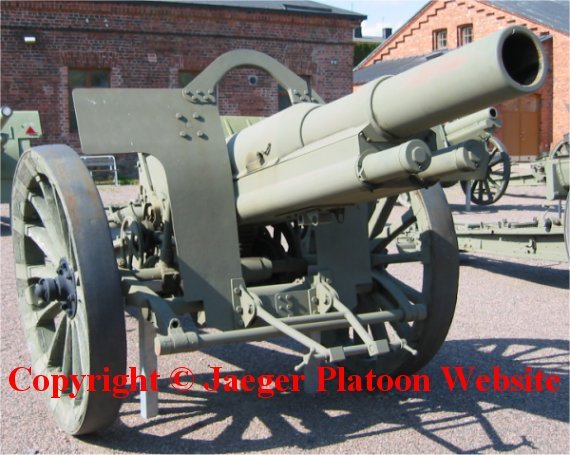 Depending on the source, some 360 – 390 of these howitzers were manufactured for the French Army during WW1. However the Canon de 155C, mle 1917 Schneider Howitzer manufactured by the competing Schneider factory proved better during the war, so the manufacture of this Saint-Chamond howitzer was stopped. However, thse Howitzers already manufactured remained in use with the French military until 1940, when the Germans invaded France. The German military captured almost 200 of these howitzers intact (and reissued large number of them for their own units, mostly to coastal defences located in France).
Depending on the source, some 360 – 390 of these howitzers were manufactured for the French Army during WW1. However the Canon de 155C, mle 1917 Schneider Howitzer manufactured by the competing Schneider factory proved better during the war, so the manufacture of this Saint-Chamond howitzer was stopped. However, thse Howitzers already manufactured remained in use with the French military until 1940, when the Germans invaded France. The German military captured almost 200 of these howitzers intact (and reissued large number of them for their own units, mostly to coastal defences located in France).
Certain characteristics of the howitzer were quite advanced for its time: It had semi-automatic breech mechanism with a vertical sliding breech block, which ejected the used cartridge case after firing a shot. The Elevation system of the howitzer didn’t tilt the barrel (as was usual), but lifted the forward part of gun carriage up from the axle. Instead of the usual dial-sight, the howitzer had collimator and angle-director as sights. It also had a conventional box trail (with a hole in middle for achieving more elevation), wood wheels with steel hoops and a recoil mechanism with a spring / hydraulic buffer / recuperator system located below the barrel. The gun shield was unusually low and gave only limited protection to the crew. Rate of fire was around 2 – 3 shots/minute.
Finland bought 24 of these howitzers from France during the Winter War. Depending on the source either 20,000 or 32,000 shots were bought with these howitzers. The howitzers arrived in early March 1940 and were issued to Heavy Artillery Battalions 27 and 29, who used the howitzers over the remaining 6 months of the Winter War to considerable effect. None of the howitzers were lost in battle. As mentioned the ammunition used was the cartridge seated type with six propellant charge sizes. The only kind of ammunition Finnish manuals list for these howitzers was the high-explosive (HE) type.
155 H/17 Tuhkaluukku (155 mm Howitzer Model 1917 “ash box door” / (Canon de 155 C, mle 1917 Schneider)
This howitzer was related to another Schneider design, the Russian 6 dm polevaja gaubitsa sistemy Schneidera (152 H/10) heavy howitzer. The howitzer first entered service with the French Army in 1917 and soon proved an excellent artillery weapon. A little more then 2,000 were still in use with the French Army in 1939 – 1940, although a considerable number of these were either warehoused or inventoried as parts. The howitzer was also sold very successful abroad. It was known as the “155 mm Howitzer M1917” in the United States, where the howitzer and its improved version, the “155 mm Howitzer M1917A1” were manufactured under license. In Poland the howitzer was known as the “155 mm Haubica wz. 1917” and in Italy it was known as the “Obice de 155/14 PB”. Some where also delivered to Russia, where the Soviets later modified them to a caliber of 152.4-mm (this version is commonly known as the “152-17S”). Other user countries included: Belgium, Brazil, Greece, Romania and Yugoslavia. Being so numerous and widely spread, large number of these howitzers fell into German hands when they occupied these countries. The Germans called the most numerous version (previously owned by France) the “15,5 sFH 414” and the Soviet version the “15,2 cm sFH 449 (r)”. The captured howitzers saw use with both German Field Artillery and coastal defence.
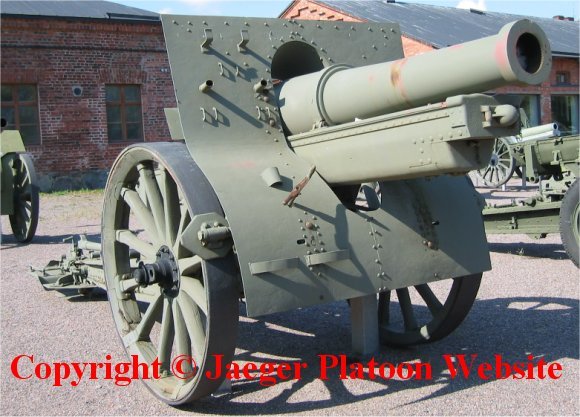
The 155 H/17 heavy howitzer. The 155 H/17 weighed 3,300kg in action, had a range of 10.3 – 11.0 kms, a caliber of 155mm, used cartridge seated ammunition and a shell weighed 43-43.6kgs. The Finnish manuals list all ammunition for this howitzer as being of the high explosive (HE) type with 7 propellant charge sizes (both full-charge and reduced-charge versions of propellant charges existed).
The howitzers basic design was quite conventional for its time. It had a box trail (with the usual hole in the middle of it), a screw breech, a recoil system with a hydraulic buffer and pneumatic recuperator and a curved gun shield. The wheels were wood with steel hoops. The howitzers were equipped so as to be suitable for both motorised towing and being towed with horses. A Limber was used while towing it with horses – this could also be used in slow motorised towing. In Maavoimat use, for faster motorised towing the howitzer had a Finnish-made special limber with pneumatic tires and a separate towing arm. During wintertime the maavoimat could also use its own special sledge in front of the howitzer to make towing of the howitzer on snow covered roads easier. The maximum speed for towing with horses was 8 km/h and maximum speed in motorised towing but without the special Finnish-made limber for motorised towing was only 10 km/h. The Finnish-made special limber allowed motorised towing with speed of up to 20 km/h. The weight of the howitzer when ready for transport was about 3,800 kg and the limber used with horses weight an additional 415-kg. The rate of fire for this howitzer was about 3 shots/minute.
Finland bought 166 of these howitzers from France, with the order placed in December 1939. The first batch, which arrived in February of 1940, contained 15 howitzers. The remaining 151 howitzers were delivered in March 1940 together with a large quantity of shells (numbers not available, but despite heavy use there were large stocks of shells in existence after the Winter War ended so the shipment must have been of considerable size). Many of them arrived in very poor shape and it is entirely possible that the French had put them together from spare parts that were not part of the official inventory. However, the Maavoimat rapidly repaired them for operational use and they would go on to be heavily used by the Finnish Field Artillery over the remainder of the Winter War.
They were issued to five Heavy Artillery Battalions (1st, 20th, 25th, 26th and 29th) and saw use with no less then eight Field Artillery Regiments (1st, 2nd, 3rd, 4th, 5th, 8th, 11th and 14th). Finnish soldiers liked the howitzer, even if the seals of its recoil system caused problems in winter and some gun carriages broke down. According to original documents at least 14 howitzers were lost in battle over the summer of 1940. Five of them belonging to Heavy Artillery Battalion 20 were lost on the 10th of June. The other lost howitzers were seven howitzers belonging to Field Artillery Regiment 3 and two howitzers belonging to Field Artillery Regiment 11, which were all lost in fighting on the Syvari front. After WW2 the howitzers remained warehoused for possible wartime use and in live-fire training use. The original wheels were replaced with new twin wheels with pneumatic tires in the 1960’s. As the amount of already manufactured ammunition was quite large the howitzers remained in live-fire training use until the 1980’s.
75 K/97 “Marianne” (75 mm Cannon Model 1897 / Materiel de 75, Modele 1897) – 48 purchased from France in early 1940
This French gun was the first field gun equipped with a modern recoil system and thew first field gun designed around the quick-fire concept. At the time France and Germany were having an arms race of sort. The French received (false) intelligence data claiming that the Germans had developed a field gun with a successful recoil system – and decided that they also had to get their own version of this, and fast. The vital buffer/recuperator system using oil and compressed air was based on an earlier design by Belgian Colonel Locard. Otherwise the gun design can be credited to French officers Colonel Albert Deport and Captain Sainte-Claire Deville. In recoil the gun barrel ran on top of 6 pairs of rollers with bronze sleeves being used as the sliding surface. The gun had a shield, the top part of which could be folded. The gun also had the typical wooden wheels with steel hoops. The wheel anchors were used to lock the wheels during firing and removed the last bit of recoil – because of this the gun, which used a Nordenfelt screw breech, could achieve a rate-of-fire as high as 20-shots/minute.
The gun proved to be excellent direct fire weapon and became the pride of the French field artillery before World War 1. However, the gun was not exactly easy to manufacture as some parts demanded a very exact fit. Despite this the Schneider factory manufactured an estimated 16,000 – 17,000 of them. During WW1 the admiration and trust that the French had placed in their excellent Materiel de 75, Modele 1897 proved to have its downside – the French Army had neglected developing heavier artillery, which proved to be vital against an entrenched enemy. As the French Army also lost their 75-mm guns in large numbers during the early part of WW1, they had to reintroduce older guns without recoil systems back into combat. During its versatile career the gun was adapted as a self-propelled artillery piece, for aircraft (B-25 bomber) and as an antiaircraft-gun. After WW1 the largest modification the French introduced for these guns was replacing the original wheels with ones that had rubber tires and but even this was not done for all guns. The French did introduce the modernized split-trail version, the Canon de 75 mle 97/33 in 1930’s, but only in relatively small numbers.
Another large manufacturer of these guns was the United States, which acquired some 4,300 of them during World War 1 and kept using their own versions, the 1897A2 and 1897A4 during World War 2, (although the gun didn’t serve the US military as an actual field gun for long in that war). Other users included Estonia, Great Britain, Greece, Ireland, Lithuania, Netherlands, Poland, Portugal and Romania. During WW2 the Germans captured French 75mm model 1897’s in many countries, with the largest numbers being about 1,000 in Poland and an estimated 3,000 – 4,000 in France. The Germans old some of the captured guns to Romania. After facing KV- and T-34 tanks on the Eastern Front the Germans found they had an immediate need for large-calibre anti-tank-guns. In 1942 they manufactured about 600 7.5 cm Pak 97/38 (75 PstK/97-38) anti-tank-guns by combining a re-chambered barrel from the French 75-mm model 1897 with the gun carriage from the 5.0 cm Pak 38 (50 PstK/38). Names used by some users:
• Poland: 75 mm armata polowa wz. 97/17
• Great Britain: Ord. QF 75 Mk 1
• USA: 75 Gun M 1897
• Germany: 7,5 FK 231 (f) and 7,5 FK 97 (f)
The gun remained in French use until the 1960’s and in use even longer in some third world countries. It has been estimated that this gun might be the most numerous field gun model manufactured anywhere in the world.
The Maavoimat’s 75 K/97 “Marianne” (75 mm Cannon Model 1897 / Materiel de 75, Modele 1897): With a caliber of 75mm x 350R (fixed ammunition), the weight in action was 1,140kg, maximum range was 7.9 km but with reduced charge ammunition the range was around 6.3 – 6.4 km. Muzzle velocity was 550m/sec and ammunition weight was 6.3-7.8kg (HE) and 6.4-6.1 kg (AP). The gun was designed to be horse-towed (but the Finnish troops sometimes transported it on the back of a truck) with a maximum speed of about 8 km/h. A Limber was used with the gun when horse-towed, this weighed 830 kg loaded and carried 27 shots for the gun.
Following the Munich Crisis, Finland drastically increased defence spending in all areas. In assessing the threat posed by the Red Army, it was evident that the large armoured formations and the many thousands of tanks the Red Army could mobilize would pose a considerable threat. While the Maavoimat had ordered 37mm anti-tank guns from Bofors, and a Tampella version was also being manufactured under license, there was still a serious shortage of these particular weapons throughout the Maavoimat. In addition, the Maavoimat had started having doubts about the effectiveness of the Bofors 37mm during Spanish Civil War, hence the conversion program that had been initiated to convert the Bofors 76mm AA Gun into an effective antitank gun in early 1938. Unfortunately, there seemed to be nothing else as effective available on the arms market that Finland could buy in quantity and so the Maavoimat began looking at alternatives. Germany declined to sell (although there were some exceptions) but France, a leading manufacturer of artillery and guns of all sorts, was amenable.
A suggestion was made (the origins of the suggestion are unknown but may have been from a Maavoimat artillery officer familiar with the then highly secret project to mount a Bofors 76mm in a turretless version of the Czech LT-38 that the Maavoimat had purchased a license to manufacture) that a number of the old Materiel de 75, Modele 1897’s in stock could be taken and modified for use by the Finns – an attractive proposition for the French as it meant they would sell weapons that had no real value except as scrap and in addition, could make money from the Finns by refurbishing them and fitting them to new carriages. Many of the guns in stock had barrels that were in a terribly worn down condition, causing dangerously large dispersion when used to shoot indirect fire from long range. However, they were available in large quantities and they were cheap. In the original configuration these guns were ill suited for fighting tanks because of their relatively low muzzle velocity, limited traverse (only 6°), and lack of a suitable suspension (which resulted in a transport speed of 10–12 km/h).
Schneider proposed to solve the traverse and mobility problems by mounting the 75 mm barrel on a modern split trail carriage. To soften the recoil, the barrel would be fitted with a large muzzle brake. The gun was primarily intended to use HEAT shells as the armor penetration of this type of ammunition doesn’t depend on velocity (the 75 had a fairly low muzzle velocity of 550m/sec meaning it would have insufficient performance with an AP shell). And even with HEAT, the gun would have a low effective range – only about 500m. However, considering Finnish terrain, 500m was an entirely adequate range. Finland agreed to the French/Schneider proposal in February 1939, signing an order for 250 guns. The Schneider factory began refurbishing and rebuilding the guns and building gun carriages based on a design provided by the Maavoimat (who had in turn acquired this somewhat surreptitiously from the Germans through personal connections).
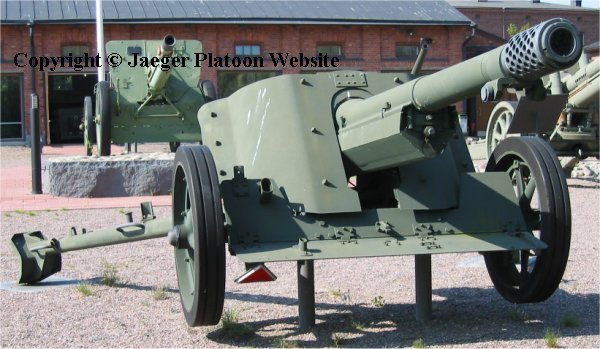
The Schneider-designed 75 PstK/97-38 “Mulatti” (75 mm antitank gun M/97-38 “Mulato”), derived from the 75 K/97 “Marianne” (75 mm Cannon Model 1897 / Materiel de 75, Modele 1897) and modified for the Maavoimat, this was an effective ant-tank gun during the Winter War. Together with light weight, good mobility and sufficient anti-armor performance with the HEAT shell (enough to penetrate a T-26 in most situations; the side armor of a KV could also be pierced), the gun was a decent anti-tank weapon. Some 140 were in service with the Maavoimat on the outbreak of the Winter War. A further 110 entered service through Jjanuary 1940.
Work progressed slowly, with the first 48 guns and 50,000 HEAT shells delivered in July 1939. Thereafter, August saw the delivery of 52 guns and a further 50,000 shells, whilst in September another 40 guns were delivered. The outbreak of war between Germany and France put a hiatus to deliveries for some two months, but on the outbreak of the Winter War, the French Government saw fit to permit delivery to go ahead and the remaining 110 guns together with 150,000 HEAT shells were delivered in late December 1939. When the French delivered the guns to Finland in late December, they arrived disassembled but with two teams of advisers to help the Finns assemble and train with them. The first team, the “artillery equipment team” led by Captain Garnier, was quite small (2 officers + 3 NCO) and had the task of assisting the Finns with assembling the guns and preparing them for use. The second team, the “artillery training team” commanded by Lt.Col Dion was much larger (25 officers + 27 NCO) and was assigned the mission of training the Finnish troops in the use of the French guns. Both of these teams returned to France in May – June of 1940, by which time all 250 guns were already in service.
The Maavoimat had three kinds of anti-tank-capable ammunition for these guns on the outbreak of the Winter War:
• 75 pspkrv 59/66-ps (French M/1910 APHE projectile with picric filling).
• 75 psa – Vj4 (AP-T projectile with 4 second tracer).
• 75 hkr 42-18/24-38 (Finnish 38 Hl/B HEAT-projectile).
The 75 pstpkrv 59/66-ps shell weighed 6.4 kg and had a muzzle velocity of 570 m/sec. The additional page concerning this ammunition was added to Finnish military manuals on the 1st of September 1939 (but was likely acquired a month or two earlier). This French pre-World War 1 APHE-shell achieved about 60-75mm armour penetration when fired from close range. The AP-shell – the 75 psa – Vj4 was more a modern AP-tracer design. It had a projectile weighing a bit under 6.1 kg and a muzzle velocity of 590 metres/second. A page containing information about this ammunition was added to Finnish military manuals on the 20th of November 11939, but as usual the actual ammunition had probably been introduced month or two before that. However firing of the “75 psa – Vj4” round was recommended in extreme emergency only – the recoil generated by the AP-rounds was fearsome and the gun carriage was not strong enough to endure a lot of shooting with this ammunition.
The recommended antitank ammunition was the Finnish designed and Ammus Oy manufactured HEAT-shells. This ammunition had warheads capable achieving about 60-75mm penetration from 60-degree point of impact when used at close range (500m or less). The gun was introduced into service in November 1939 and worked well in Finnish hands. The short shooting distances typically offered by Finnish terrain made them relatively effective even against the heavily armoured KV tanks. Against the lighter Soviet tanks that were used in large numbers during the Winter War, they were lethal.
Subsequent to the outbreak of the Winter War, Finland attempted to purchase more of the “modified” 75’s. The French government declined but offered to sell Finland 48 unmodified guns together with 50,000 shells. The Finns accepted, with 12 arriving in March 1940 and the remainder in April. The guns were in the same poor condition as the earlier ones had been prior to refurbishing. None of these guns were used during the Winter War and in 1941 they were scrapped.
Other French Aid
In addition to the artillery and artillery shells listed above, France would also supply Finland with large quantities of machineguns, machinegun cartridges, rifles and 20,000,000 rifle bullets as well as more than 100 Brandt 81mm Mortars (similar to the Maavoimat’s Tampella-built 81mm Mortars, so we will not look at these in any detail here). Artillery Tractors and huge numbers of handgrenades were also supplied. Finland would have good reason to be grateful to France for what was in fact significant quantities of aid – not least among them the aircraft, two destroyers and significant numbers of artillery guns and ammunition.
Some of the equipment supplied as aid was perhaps not particularly useful. In this category fell the 5,000 M/15 Chauchat 8 mm light machinegun (Fusil Mitrailleur Mle 1915). A small number (15 or so) of Chauchat light machineguns had accumulated in the hands of the Finnish Armed Forces by the end of the Finnish Civil War in 1918. Certain photographs suggest that they may have been captured from the Russians, but some the Finns may have received from the Germans.
At that time the Finnish military wasn’t really interested in them and in 1937 they were sold abroad. During the Winter War the military equipment constraints that the Maavoimat were under led to the second coming of these dubious weapons, as France “generously donated” some 5,000 Chauchat light machineguns and 10 million rounds of ammunition for them to Finland. The weapons were delivered to Finland in February – March of 1940. Due to the shortage of equipment that had resulted from a combination of full mobilization and the unforeseen volume of volunteers, many of them equipped with either no weapons (many of the Polish volunteers rescued from Latvia and Lithuania) or lightly armed with individual weapons only, the Maavoimat was desperate for additional support weapons. As a result, the Chauchat light machineguns were issued to some unfortunate front-line units of volunteers.
Three French gentlemen – Chauchat, Ribeyrolle and Sutter – developed the Chauchat light machinegun, in fact the three first letters of it’s other name (C.S.R.G.) used for this weapon came from first letter of the surnames of these gentlemen. Chauchat was the main designer and Ribeyrolle his assistant. Sutter was an engineer and the owner of the Gladiator bicycle factory, the manufacturer of this weapon, from which the last letter “G” in C.S.R.G. originated. While the idea of giving the task to manufacture the new weapon to bicycle factory instead of further burdening the existing armaments industry with it may have looked good early on, in this case the outcome didn’t go too well. In fact the outcome suggests that using established armament production facilities for manufacturing might have beem a more sensible choice for the introduction of a totally new type of weapon.
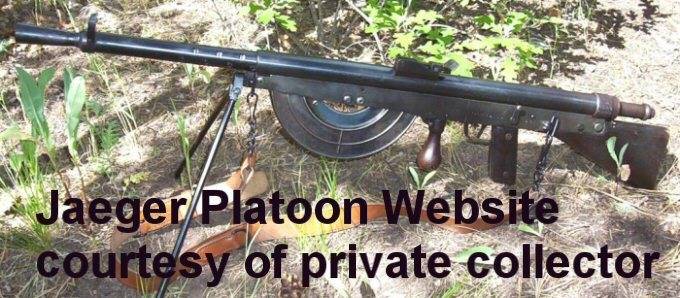
The French Chauchat m/1915 was one of the very first light machineguns. While it was cheaper to manufacture than its direct competitors, the Madsen and the Lewis guns, unfortunately the inexperience of its manufacturer showed in its quality.
While the French were able to issue the Chauchat in large numbers during World War 1 (and it was certainly better than no light machinegun at all) it also proved to be quite a poor military weapon. The inexperience of the manufacturer was not the only reason for this. It used a long barrel-recoil system, which with hindsight can be considered maybe the most difficult option for a self-loading weapon to get work reliably. In addition the weapon’s magazine, which had large holes in its sides, was not really a well thought out design for use in muddy trenches either. The ergonomics of this light machinegun left a lot to be desired and the bipod, with its stick-shaped legs, likely didn’t work too well on soft surfaces either. Not only was this weapon unsuitable for war in the trenches of the Western Front, it was also unreliable and parts were not interchangeable. Despite these flaws, manufacturing of the Chauchat continued from 1915 to 1924. While other early light machineguns also had their own share of issues, the Chauchat became obsolete practically in record time as other and better light machineguns became available.
By World War 2 practically every country in the world (including Finland) had better light machineguns. Still, the Chauchat continued to be used by France, Greece, Belgium and also by USA (the US used a version chambered for .30-06). The weapon had a flash hider at the end of the barrel and a tangent-type rear sight with settings 2 – 20 (for 200 – 2000 meters). Its selector switch had the typical three settings: C for semiautomatic-fire, M for full-automatic fire and S for safe. The 5,000 machineguns delivered to Finland also seem to have included antiaircraft-sights. The rather unique 180-degree arch shaped 20-round magazine weighed 910 grams fully loaded, while the empty one weighed 360 grams. As mentioned, these machineguns were issued to a number of unfortunate volunteer units and were roundly cursed almost from the start. At the earliest possible moment they were replaced with captured Soviet light machineguns (of which the Maavoimat soon had large numbers available) and were therafter only used by home-front units and some field artillery units. These might have found them marginally more useful, since they had been delivered with anti-aircraft sights and even with their slow rate of fire they were more effective against strafing ememy aircraft than shooting with bolt action rifles or throwing stones. After WW2 the Maavoimat’s Chauchat light machineguns remained warehoused until 1955 when selling them abroad began. The last ones were sold to Interarmco in 1959 – 1960.
Note: Once again, I should mention that information on the Chauchat, as with many other weapons mentioned here, is sourced from http://www.jaegerplatoon.net – with thanks to Jarkko for permission to reuse – all mistakes are however mine, as is the “alternative history” of the use of these weapons.
Latil Artillery Tractors
The last item of French Aid that we will look at in detail are the French supplied Artillery Tractors. Finland had brought a number of Artillery Tractors from France in the late 1930’s with the French Loan of 1937 (we will look at this loan and the equipment that was purchased in a bit more detail in a later Post). As part of the aid shipments that were received from France in February – March 1940, included were some 137 Latil M2Tl6 Artillery Tractors which augmented those already purchased in 1937. These were used for towing the Skoda 76mm Artillery pieces, Bofors 37mm Anti-tank guns, Bofors 40mm and 76mm AA guns and the small number of German-supplied 88mm AA guns that the Finns had managed to acquire. Some were also used by Mortar Platoons and Mortar Companies (with a trailer, they could easily carry either an 81mm or 120mm Mortar, Mortar Team and first-line ammunition supply). They were also used to tow Searchlights, Sound locators and (as they entered service) the new Nokia Radars. Relatively cheap and quite capable when towing lighter equipment, they equipped a large number of Maavoimat units and served until well after WW2. In one of the war-time emergency projects for which Finland had carried out some pre-planning and contingency preparation, a derivative of these vehicles was built by the Ford Helsinki plant after France was cut off as a source of supply.
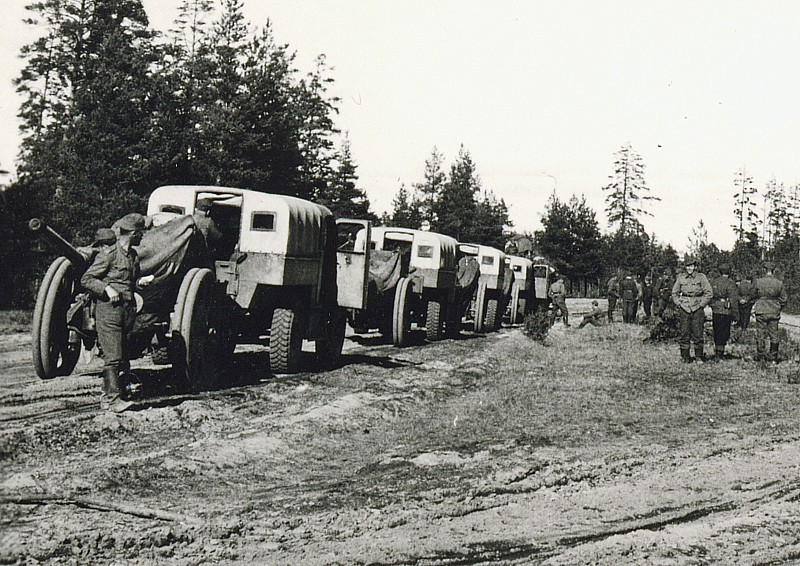
Maavoimat AA Gun Battery – four Latil trucks with towed 76-mm Bofors antiaircraft-guns (either the Bofors 76 ItK/28 B or 76 ItK/29 B. The soldier in the photo is covering exactly those parts of the gun, which would allow identifying which of these two types it is) taking a break whilst on maneouvers: Summer 1939
Latil was a French automaker specializing in heavy duty vehicles, such as trucks, tractors and buses, from 1898 to 1955. In 1897, Auguste Joseph Frederic Georges Latil patented a system of “broken transmission”, allowing the steerable wheels to also be the driving wheels (front-wheel drive). He went on to exploit his idea through different companies on the early years of the development of motor transport. In 1898 he founded “La société Korn et Latil” with a mechanic, Alois Korn, in Marseille. They invented a system that could be used to replace the steering axle of horse towed wagons with a motorised component. In 1903 the firm changed its name to “Avant-Train Latil” and had great success motorising all kinds of horse powered wagons. In 1908 Charles Blum joined the company, which became “Compagnie Française de Mécanique et d’Automobile – Avant-Train Latil” and began to build 3 ton trucks. In 1911, Latil designed and built the first four-wheel drive vehicle. This type of vehicle interested the French Army in 1913 for its ability to tow heavy artillery over all terrain and the TAR (Tracteur d’Artillerie Roulante) was built. In France, the buyers of this vehicle benefitted from a 30 percent rebate as compensation for mobilization in case of war. After WWI, Latil began to build tractors for agriculture and forestry as well as trucks for civilian use.
The Latil Artillery Tractor as in use within the Maavoimat had a 4 cylinder 68hp engine, used 40-100 litres per 100kms, had a 75 litre fuel tank and a 40 litre auxiliary fuel tank, a top speed of 50-60kph, interchangeable 2 and 4 wheel steering. Dimensions were 1.93m wide, 5.10m long and 2.5m height. Wheelbase was 2.7, and weight with full equipment was 4,000kgs. Crew space for 3 in the cab with up to 8 in the rear depending on configuration. With relatively large numbers of these and other artillery tractors purchased from France, the Maavoimat artillery became reasonably mobile.
While Finland acquired a large number of Latil’s for the Maavoimat from France over 1937-1938, they did not exactly sit idle in military warehouses and depots. Rather, -they were leased out to the civilian sector with the proviso that they be well-maintained and would be immediately available for military use in the event of mobilization. The large number of Latil all-wheel drive tractors in use with the Maavoimat by late 1939 aided the mobility of the Artillery, AA Gun, Anti-tank Gun and Mortar units considerably. The additional 137 Latil M2Tl6 tractors supplied by the French over February-March 1940 were sufficient to offset combat losses experienced in the first four months of the war, by which time the Ford Helsinki plant had managed to start up production of a Finnish more-or-less-copy which would start entering service in numbers in June 1940. By the end of the Winter War in late 1940, the Maavoimat would be perhaps the most mechanised military in Europe – although with dependency on imported oil in mind, vehicle usage was strictly controlled for all except actual combat situations. As an additional measure, many rear-area military vehicles and most of the vehicles remaining in civilian use (few and far between as they were) were converted to run on wood-gas (more on this suject in a later Post).
The wide-spread use of vehicles for towing of guns and movement of mortars and mortar crews largely arose from the Maavoimat’s heightened emphasis on mobility. This also meant that much of the new artillery and light guns (such as the Skoda 76mm, the Bofors 37mm anti-tank guns abd both the 81mm and 120mm Mortars) were capable of being broken down and moved on sleds in winter or on horses in summer – particularly critical on the often roadless terrain of eastern Karelia and the northern parts of Finland. This combination meant that in contrast to most european militaries of 1939, where the horse was still the most common source of motive, the Maavoimat had embraced motorisation to a large extent, but certainly not uncritically and to the exclusion of horses – which still remained an important component of the Maavoimat’s movement infrastructure.
One must also keep in mind that in 1939, pretty much all european nations were economically and industrially unable to fully motorise their forces. Finland was no exception, but government policies and the industrialisation of the 1920s and 1930s had lead to the completing of two major motor vehicle manufacturing factories – Sisu and Ford, both of which were capable of producing a wide range of vehicles without any reliance on foreign components. With the move to a war economy over the period between the Munich Crisis and early 1939, the development of this infrastructure in the preceding two decades paid off. In this combination of industrial infrastructure development, early move to a war footing and the overall planning and preparation for a total war involving the entire nation, Finland was able to put in place a motorised transport capability that gave the Maavoimat a mobility and logistical advantage which, when combined with the Maavoimat.s strategic and tactical doctrine gave them a marked qualitative advantage over the Red Army. The large numbers of Latil artillery tractors, Renault UE Chenillette’s, Souma MCG and Unic P107 half-tracks purchased over 1937 through to mid-1939 and in use by the Maavoimat in late 1939 were one aspect of this.
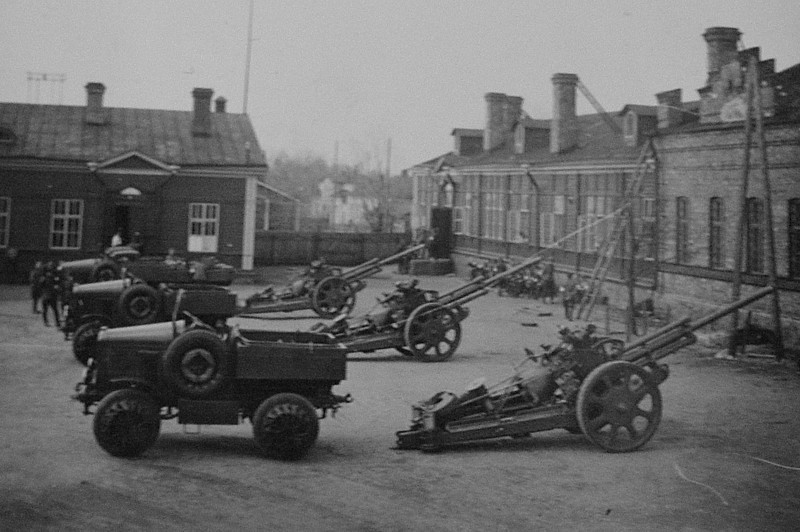
The Latils were also used to tow heavier guns; here, lined up at an Artillery Unit Depot during the mobilization period over September-November 1930
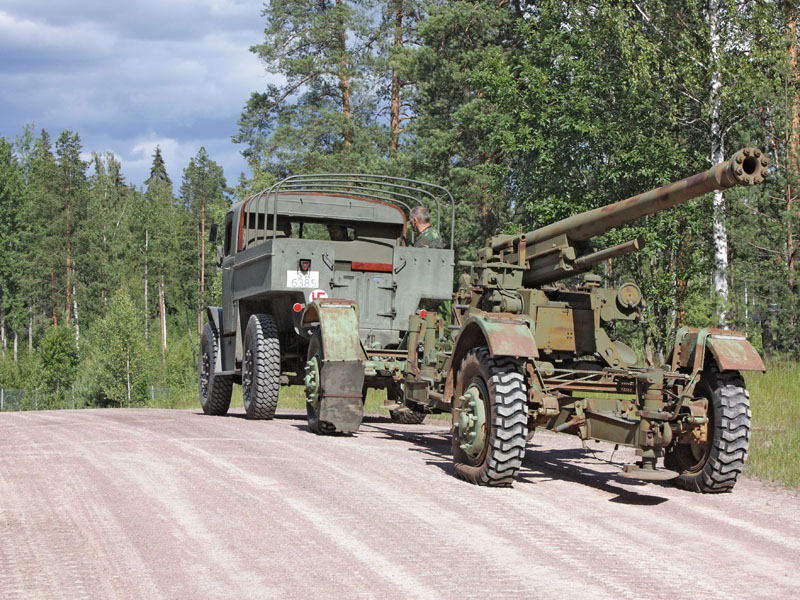
Maavoimat Latil M2Tl6 towing AA gun in Summer 1940. Note the red swastika on the rear of the vehicle – Finnish AA-troops used this as their symbol (as opposed to the blue swastika of the Ilmavoimat)
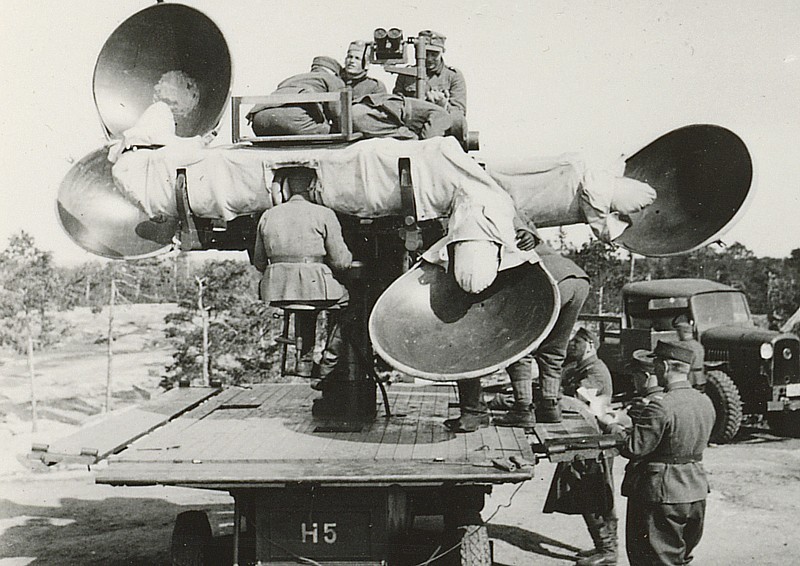
Latil Truck in background with trailer-mounted Finnish Sound Locator equipment in foreground. At the time of the Winter War, Sound Locator equipment was still in use with many AA gun batteries – it would not be completely superceded by the new Nokia Radar until late in 1940.
Note: Information on the Finnish Latil Artillery tractors is sourced from http://www.latiltrucks.net – a wonderful source of information with a gazillion photos of Latil Trucks – all mistakes are however mine, as is the “alternative history” of the use of these vehicles.
Citroen T45 (P45) Trucks
Of even greater value to the Finnish military than the Latil trucks were 189 Citroen T45 Trucks that were shipped in Finland progressively between December 1939 and April 1940 in a number of small consignments. The T45 (also referred to as the P45) was a heavy truck, weighed in at 4.1t, could carry 3.5t with a maximum speed of 60 km/h (6 cylinder, 4,560 cubic cm, 73hp engine). Length of 6.38m, width of 2.33m, height of 3m. In 1940, some 4,000 of these trucks were in service with the French Army.
The Citroen T45’s were assigned to Field Artillery Units as they entered service and many would remain with the Finnish Army throughout WW2. They were robust and reliable trucks, and Finland would go on to purchase a further 1,126 from the Germans over 1941, after the Fall of France and as part of a number of such “nickel and steel” for weapons and food deals that Finland would cut with Germany between 1941 and 1943.
Potential French Intervention in Finland
An aspect of French aid that we will not look at in any great detail here was the potential Anglo-French intervention on a large scale in the Winter War. At this stage, suffice it to say that in February 1940, the Allies offered to help Finland: the Allied plan, approved on 4–5 February 1940 by the Allied High Command, consisted of 100,000 British and 35,000 French troops that were to disembark at the Norwegian port of Narvik and “support Finland” via Sweden while securing supply routes along the way. Plans were made to launch the operation on 20 March 1940 under the condition that the Finns first make a formal request for assistance (this was done to avoid German charges that the Franco-British forces constituted an invading army). On 2 March, transit rights were officially requested from the governments of Norway and Sweden.
The Allies hoped that Allied intervention would bring the two still neutral Nordic countries, Norway and Sweden, to the Allied side by strengthening their positions against Germany — although Hitler had already in December 1939 declared to the Swedish government that Franco-British troops on Swedish soil would immediately provoke a German invasion.
However, Finnish Intelligence reported that only a small fraction of the Franco-British troops were intended for Finland. Proposals made by Finland for Anglo-French forces to enter Finland directly via the ice-free harbour of Petsamo had been previously dismissed. The capture of Murmansk and the Kola Peninsula by the Finns in February 1940 did not change the British and French position – neither did the Finnish request to use Lyngenfjiord as an alternative entry point, leading to speculation, encouraged by German sources, that the true objective of the operation was to occupy the Norwegian shipping harbour of Narvik and the vast mountainous areas of the north-Swedish iron ore fields, from which it was assumed that the Third Reich received a large share of its iron ore (actually 30% in 1938), regarded as critical to war production. A much much later Post will cover “The Appeal that was Never Made” in detail.
Sir R. Campbell to Viscount Halifax.—(Received March 12, 1940.)
(No. 41.)
(Telegraphic.)En clair.
Paris, March 12, 1940
M. DALADIER made a statement in the Chamber this afternoon in reply to the interpellations regarding French aid to Finland. After describing the material assistance which France had given Finland, and the various expressions of thanks which had been received from the Finnish Government, he continued as follows:
” ‘Will you also send men?’ I was asked during the Secret Session. I replied : ‘Yes.’ The decision was taken at the Supreme War Council of 5th February (1940). As far as France is concerned, since 26th February French troops have been organised, specially equipped and assembled, and transports have been ready in two great ports on the Channel and the Atlantic. We were therefore ready to give assistance in men. The British Government, who were to be responsible for the greater part of the assistance in men and for the naval protection of the Expeditionary Force, have on their side shown the greatest activity. As regards diplomatic action, we have worked night and day with neutral and friendly Governments in favour of Finland.
“But military intervention in Finland is only possible if Finland appeals to the Allies. It may be possible to maintain a contrary view on the platform, but I declare that I do not consider that military assistance in the form of thousands of men is possible if Finland does not address a public appeal to France and the United Kingdom. To this day France and the United Kingdom have received no direct appeal for assistance from the Finnish Government. Why is an appeal of this nature necessary? Because the Swedish and Norwegian Governments are vigorously opposing any passage of Allied troops through their territory. An appeal is also necessary for reasons of international law, for even in the midst of war I do not wish my country to trample on international law.
“This appeal, in spite of our insistence, has not yet been addressed to us. On the 7th March I handed to the Finnish Minister in Paris a note saying in substance: “For some days we have only been waiting for an appeal from Finland in order to come to her assistance with every means. We find it difficult to understand why this appeal is still postponed. We are indeed, aware of the pressure exerted by Sweden to bring you to make peace but do you not fear that Russia, who dreads the intervention of the Allies’ is tricking you in order to destroy you later? Aeroplanes and an Expeditionary Force are ready to start, but if Finland does not now appeal to the Allies, the latter will be unable at the end of the campaign to assume the slightest responsibility for the final territorial status of Finland. I would ask you to let us know your decision as a matter of extreme urgency.’
“M. Tanner has informed me that a final reply in one sense or the other will be sent us this very day. If an appeal is addressed to the Allies to-day or to-morrow, they will go to the help of Finland with all the forces they promised some weeks ago.”
2. M. Daladier’s statement was applauded by the Left and Centre, but received in silence by the Right.
3. M. Daladier then asked the Chamber to agree to the postponement of the debate until 19th March. After short statements by the various interpellators, this was put to the vote and the Government’s proposal was accepted with only two dissentient votes.
Suffice it to say at this point that the plans made by the British and French involved the transit of British and French troops and equipment through neutral Norway and Sweden and were primarily directed at the seizure of Narvik and the Swedish iron ore fields using assistance for Finland as a mask for the main endeavour. That Sweden would not agree was self-evident. That the Finns were aware of this and played a delicate diplomatic game with the British and French was also evident – and the transfer of the Polish Division from France to Finland through Petsamo was proof enough of the ultimate intentions of the British and French if any further was needed. France itself was caught between the forces of the Left and the Right – the Left, who preferred fighting Germany and opposed any actions against the USSR, and the Right, who would have far preferred to be fighting the Soviet Union rather than Germany.
The major successes achieved by the Maavoimat against the Red Army over the period of February to April 1940 to a certain extent removed the need for any major foreign intervention to assist the Finns – and the large numbers of foreign volunteer units (primarily the Poles, Italians, Spanish, Hungarians and the scandanavian Viking Division) already in Finland by April 1940 had greatly augmented Finnish manpower. Thus there was no great advantage to the Finns in catering to the Anglo-French desire to precipitate a move which would in all likeliehood bring Germany and the Anglo-French Allies into open conflict in Sweden and Norway.
Despite this of course, the Allies were prepared to intervene in Norway for their own reasons. Churchill for example had from the beginning wanted a more resolute policy towards Norway. He was aware that the iron ore shipments to Germany via Narvik were important to Germany’s war effort. On September 19th, 1939, he told the British War Cabinet led by Chamberlain that the transportation of iron ore had to be stopped. On September 29th, he proposed that the water around Narvik should be mined if iron ore transportation started up again – shipments had been suspended at the start of the war. The Cabinet failed to support Churchill on this, as they did not want to breach Norway’s neutrality. Regardless of this, Churchill continued to press for it. Between September 1939 and April 1940 several incidents in Norwegian maritime waters, notably the Altmark incident in Jøssingfjord, put great strains on Norway’s ability to assert its neutrality. Norway managed to negotiate favorable trade treaties both with the United Kingdom and Germany under these conditions, but it became increasingly clear that both countries had a strategic interest in denying the other access to Norway.
Norway, though neutral, was considered strategically important for both sides of the war for two main reasons. First was the importance of the port of Narvik, from which large quantities of Swedish iron ore, on which Germany depended, were exported; this route was especially important during the winter months when the Baltic Sea was frozen over. Narvik became of greater significance to the British when it became apparent that Operation Catherine, a British plan to gain control of the Baltic Sea, would not be practical. Second, the ports in Norway could serve as a hole in the blockade of Germany, allowing access to the Atlantic Ocean. One of the two reasons for Germany’s invasion of Norway was its dependence on Swedish iron ore, which during the winter was shipped from the Norwegian port of Narvik as well as through the Swedish port of Lulea thanks to the Finnish ice-breakers. However, the hostility between Finland and Germany aroused by Germany’s alliance with the USSR and the refusal of Germany to sell Finland military equipment after the outbreak of the Winter War meant that Germany again considered access to Narvik as critical. This, by securing access to Norwegian ports, the Germans could more easily obtain the supply of iron ore they needed for their war effort.
The other main reason why control of Norway was considered to be crucially important was that possession of Norway enable Germany to use its sea power effectively against the Allies, particularly Britain. While Norway was strictly neutral, and unoccupied by either of the fighting powers, there was no threat. But the weakness of the Norwegian coastal defences, and the inability of her field army to resist effectively a determined invasion by a stronger power were clear. Großadmiral Erich Raeder had pointed out several times in 1939 the potential danger to Germany of Britain seizing the initiative and launching its own invasion in Scandinavia – if the powerful Royal Navy had bases at Bergen, Narvik and Trondheim, the North Sea would be virtually closed to Germany, and the Kriegsmarine would be at risk even in the Baltic. A successful invasion of Norway by either side had the potential to strike a major strategic blow against the other without getting bogged down in the large-scale trench warfare notable of the previous conflict.
Thus the outbreak of the Winter War presented the Allies with an opportunity to use the pretense of sending troop support to additionally occupy ore fields in Sweden and ports in Norway. The plan, promoted by the British General Edmund Ironside, included two divisions landing at Narvik, five battalions somewhere in mid-Norway, and another two divisions at Trondheim. The French government pushed for action to be taken to confront the Germans away from France. The Norwegian government was at the same time also increasingly pressured by Britain to direct ever larger parts of its massive merchant fleet to transport British goods at low rates, as well as to join the trade blockade against Germany. The new French prime minister, Paul Reynaud, took a more aggressive stance than his predecessor and wanted some form of action taken against Germany. At the same time, Churchill continued to be a strong agitator for attacking and occupying Norway as he saw this as a way to attack Germany from the north. Finland however, would refuse to be the excuse for this intervention and steadfastly rejected any use of the excuse of providing assistance to Finland, continuing to insist that any assistance could be routed through the rapidly expanding port of Petsamo and the former Russian port of Murmansk, now securely in Finnish hands as of February 1940.
Over March and April 1940, British plans for an invasion of Norway were prepared, mainly in order to reach and destroy the Swedish iron ore mines in Gällivare, continuing to use assistance for Finland as pretense. It was hoped that this would divert German forces away from France, and open a new fighting front in southern Sweden (as has been mentioned). The Allied High Command also agreed that mines would be laid in Norwegian waters (Operation Wilfred) and that the mining should be followed by the landing of troops at four Norwegian ports: Narvik, Trondheim, Bergen and Stavanger. Because of Anglo-French arguments, the date of the mining was postponed from April 5–8. The postponement was disastrous for the Allies. On April 1, Hitler had ordered the German invasion of Norway to begin on April 9 on the pretext that Norway needed protection from British and French interference; so, when on April 8, the Norwegian government was preoccupied with earnest protests about the Royal Navy’s mine-laying, the German expeditions were well on their way.
As we know, the German attack on Norway met its objectives and Norway was successfully occupied up to and including Narvik, despite some setbacks along the way. Not the least of these was the Finnish seizure in force of the Finnmark region of Norway and a standoff with the Germans. The Finns refused to intervene in the fighting in Narvik between the British, French and Germans but some French and Polish units would later end up in Finland after the debacle of the French and British intervention – falling back into the Finnmark – as would many Norwegian Army units. These units consisted of two battalions of the 13th Foreign Legion Demi-Brigade and the Polish Independent Highland Brigade under Zygmunt Bohusz-Szyszko. They were still in the Finnmark when France fell. Given the option of being returned to the UK or of assisting the Finns in their fight against the USSR, the men of both units opted to fight with the Finns. Thus, while not exactly volunteers, these two battalions of the French Army would fight in Finland though to the end of the Winter War, after which they would return to the UK together with many of the Polish volunteers.
The 13th Foreign Legion Demi-Brigade
The 13e DBLE was raised in February 1939 at Sidi Bel Abbes in Algeria, with its cadre drawn from 1e REI (the 1st Foreign Regiment, the senior Regiment of the Foreign Legion). In January 1940, the British and French high commands had decided to dispatch an expedition to Finland, to support Finland against the Soviet Union in the Winter War. The French decided to allocate a demi-brigade of legionnaires to the expedition – and 13e DBLE was born. In March 1940, the 13e DBLE comprised 55 officers, 210 non-commissioned officers (sous-officiers), and 1,984 legionnaires. The average age of the legionnaires was between 26 and 28 years old, and most counted 4 to 5 years service. Many of its veteran NCOs had served in the Legion for 10 or more years. Its commander was Raoul Magrin-Vernerey, a hero of World War I, wounded 17 times in battle, who had served with the Legion since 1924.
With the collapse of the French and British armies in France it was decided to cancel the Narvik operation and withdraw. The 13e DBLE evacutated Narvik on 7 June and withdrew into the Finnmark. The unit had lost 7 officers, 5 NCOs, and 55 legionnaires during the campaign. Before they could be withdrawn to the UK, French Prime Minister Paul Reynaud resigned on 16 June and Marshal Pétain took control of the French government. Pétain announced his intention to capitulate to the Germans and sign an armistice. On 18 June, General Charles de Gaulle, under-secretary of defence in the Reynaud government, broadcast an appeal to the French people to continue resistance. On 1 July, the Foreign Legion troops at in the Finnmark were given the choice of joining the Free French Forces under De Gaulle and being shipped to the UK, repatriation to Vichy-controlled North Africa, or remaining in Finland to fight with the Finns against the USSR. Whereas there had been a decided split within the 13e DBLE between pro-Vichy and pro-De Gaulle cliques, the option of fighting for Finland was a choice that appealed strongly, especiallyas the unit ahd originally expressly been formed to assist the Finns. Amongst the legionnaires and their officers, almost all volunteered to fight for Finland.
Raoul Charles Magrin-Vernerey (born 7 February 1892, Budapest, Hungary – 3 June 1964, Paris, France), commanding officer of the 13e DBLE: entered the École SpécialeMmilitaire de Saint-Cyr, where he graduated in 1914 as a sous-lieutenant. He was posted as a junior officer to the 60th infantry regiment, and ended the war as a Capitaine. During the war he was wounded seven times and became a chevalier of the Légion d’honneur. Between the wars, he served at various stations throughout French Syria, joining the Legion on March 1, 1924. He was promoted to Major in 1928. In 1931, he was transferred to service in Morocco with the 2nd Foreign Infantry Regiment and followed service there in French Indochina with the 4th Foreign Infantry Regiment. He was promoted to Lieutenant Colonel on 1 June 1938, after commanding a training regiment. On February 23, 1940, he was appointed to command two battalions of Legionaries, which would shortly be known as the 13th Foreign Legion Demi-Brigade, commanding the 13 DBLE in the Battles of Narvik. He would go on to lead his men in battle against the Red Army through the remainder of the Winter War before joining the Free French in London, England with his surviving men. He was promoted to Major General during the war.
The 13e DBLE would go on to distinguish itself in battle over the remainder of the Winter War, after which the unit eventually returned to the UK and would join the Free French forces. The 13th included a number of junior officers who would later rise to general rank, such as Captain Marie-Pierre Koenig, Captain Jacques Pâris de Bollardière, and Lieutenant Bernard Saint-Hillier. Other officers, such as Captain Dimitri Amilakvari and Captain Gabriel Brunet de Sairigné would also achieve fame on the battlefield. Second Lieutenant Pierre Messmer would later serve as De Gaulle’s defence minister.
Aid from France to Finland in the Winter War – a Summary
Aid from France to Finland in the Winter War was significant in equipment and in artillery, if not in volunteers. The thirty Morane-Saulnier fighter aircraft that France supplied for the Finnish air force fought to great effect through the war, as did the 98 Caudron-Renault C.R 714 fighters, dangerous to their own pilots as they were. So to did the two older L’Adroit Class Destroyers, La Railleuse and Le Fortune make a sizable and important contribution to the Finnish Navy. The large numbers of artillery guns shipped from FRance also made a significant contribution to Finnish strength. Finnish Artillery, trained under standards set by the great Finnish Artillery general, Nenonen, would play a significant part in Finland’s defence in the Winter War.
The contribution of the French Artillery should not be underestimated as the numbers of guns were significant, as were the quantities of artillery shells shipped to Finland:
- 1oo x Schneider 76 K/22 – 76mm Field Gun
- 150 x Schneider 105 K/13 – 105mm Field Gun
- 136 x 90 K/77 – 90mm Field Gun
- 72 x 120 K/78 – 120mm Field Gun
- 48 x 155 K/77 – 155mm Field Gun
- 24 x 155 H/15 – 155mm Howitzer
- 166 x 155 H/17 – 155mm Howitzer
- 250 x 75 K/97 Marianne Anti-tank gun conversions
The 250 75mm “Marianne” anti-tank guns that Schneider had manufactured for Finland from older French guns proved decisive in their ability to take out even the heaviest Soviet tanks. It was these guns, working in conjunction with the much larger numbers of Bofors 37mm anti-tank guns, that effectively neutralised the Soviet Armour on the Karelian Isthmus and, later, elsewhere. Last but not least, the decision of the French to ship the Polish 2nd Infantry Fusiliers Division, 15,830 men in all, to Finland, proved yet a further Division of foreign volunteers which would be added to the strength of the Polish Corps already fighting in Finland against the Russians.
Taken together, the French made a large and significant contribution to Finland’s defence, with the 13th Foreign Legion Demi-Brigade opting to join and fight with the Finns even after the Fall of France and the surrender of the French Government.
 Copyright secured by Digiprove © 2013 Alternative Finland
Copyright secured by Digiprove © 2013 Alternative Finland


